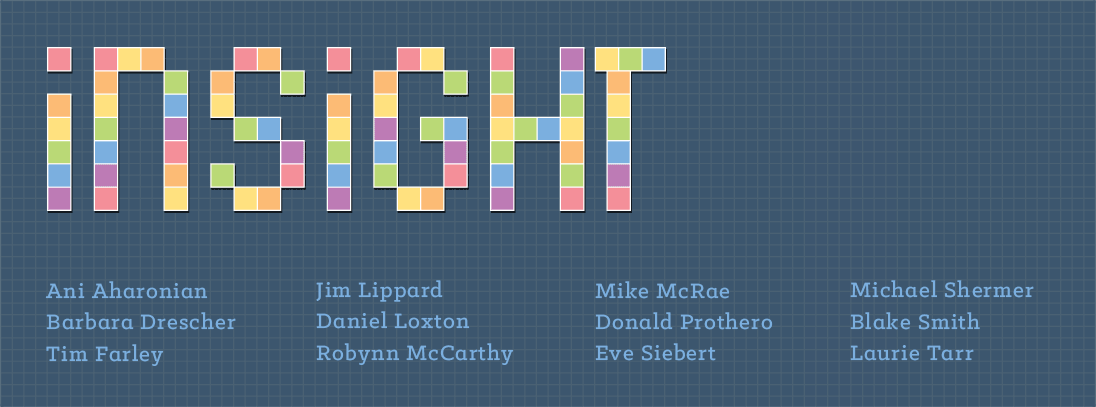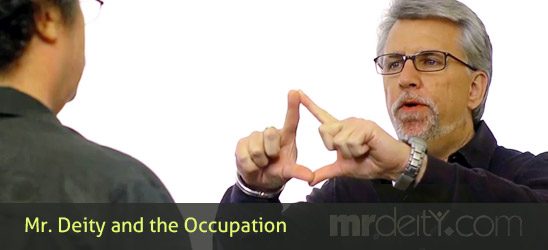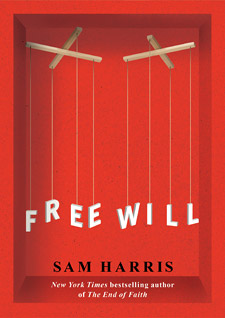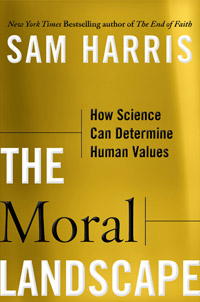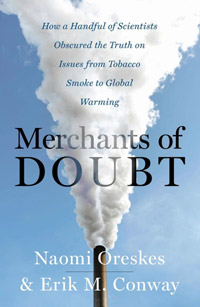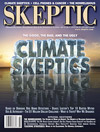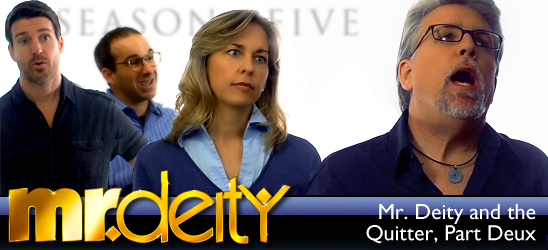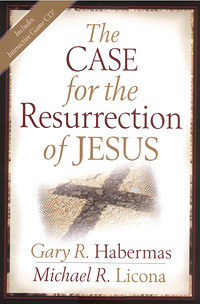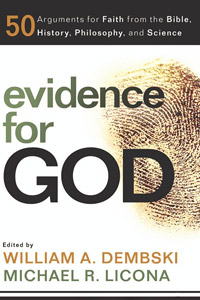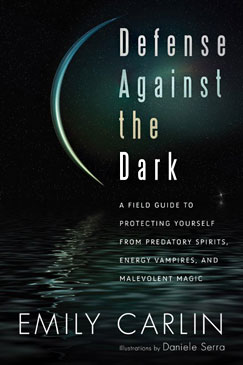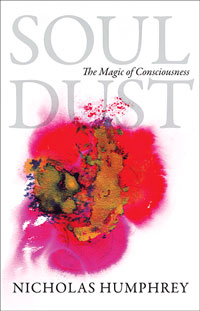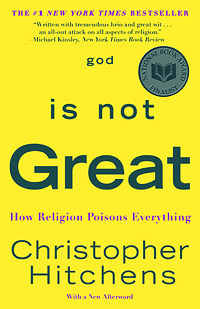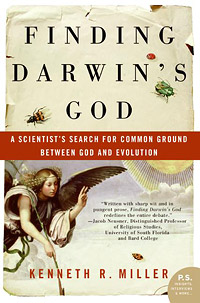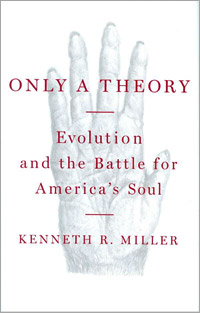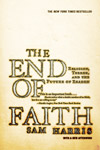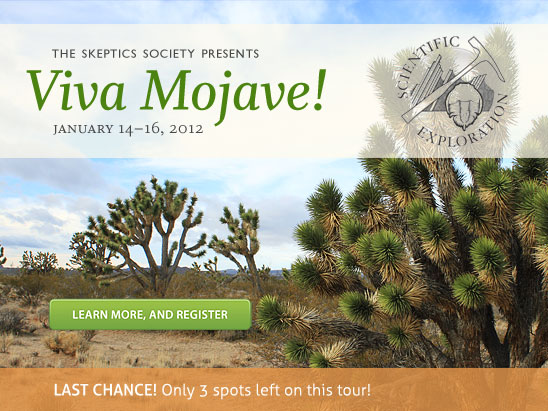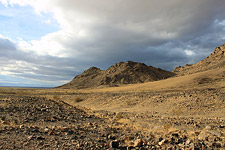Rise Above: How the World Works…or Should Work
In this lecture, Dr. Shermer integrates several strands of thought on the evolution of morality, ethics, the history of civilization, and how to be good without god by creating a society that accentuates the positive aspects of human nature while attenuating the negative aspects. He shows how and why both liberal democracy and free trade lead to better societies and that we can “rise above” our inner demons by bringing out the better angels of our nature.
Shermer’s Last Law
Any Sufficiently Advanced Extraterrestrial Intelligence is Indistinguishable from God
In this brief lecture, Dr. Shermer demonstrates why the Intelligent Design creationists’ and theologians’ search for a designer god can only result in the discovery of an extraterrestrial intelligence; one with such power that it can create life, planets, stars, and even universes. As Dr. Shermer states, “Any sufficiently advanced extraterrestrial intelligence is indistinguishable from God.” In this lecture Dr. Shermer also discusses the potential trajectory of our own technological advancements.
12-02-15
DATE CORRECTION NOTICE: Dr. Peter Diamandis’ lecture will take place on Sunday, February 26, 2012 at 2 pm. It was incorrectly stated as Saturday in last week’s eSkeptic.
In this week’s eSkeptic:
- Follow Michael Shermer: Alfred Russel Wallace and The Nature of Science
- Skepticality: Interview with Daniele Bolelli
- New Episode: Mr. Deity and The Occupation
- Feature Article: Darwin’s Legacy
- Upcoming Lecture at Caltech: Dr. Peter Diamandis
- Special Double Caltech Event: A debate, and a lecture (Sam Harris)
- Fundraising Drive on Now: Help Send Skepticism 101 into the World!

NEW ON SKEPTICBLOG.ORG
The Natural & the Supernatural:
Alfred Russel Wallace and The Nature of Science
A couple weeks ago, Michael Shermer participated in an online debate at Evolution News & Views with Center for Science & Culture fellow Michael Flannery on the question: “If he were alive today, would evolutionary theory’s co-discoverer, Alfred Russel Wallace, be an intelligent design advocate?” In this week’s Skepticblog, we present part three of the debate.

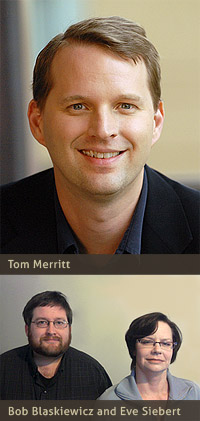
Interviews with Tom Merritt, Bob Blaskiewicz & Eve Siebert
SKEPTICALITY EPISODE 176
This week on Skepticality, Derek sits down with Tom Merritt to discuss the importance of critical thinking when assessing heated issues such as the much-reported working conditions at computer manufacturer Foxconn, a large supplier of Apple components. Then, Bob Blaskiewicz and Eve Siebert join Derek to discuss the evidence that Shakespeare was actually the man who penned the famous plays of the Globe Theater, and how the movie Anonymous is steeped in fiction.
The Latest Episode of Mr. Deity: Mr. Deity and the Occupation
WATCH THIS EPISODE | DONATE | NEWSLETTER | FACEBOOK | MrDeity.com
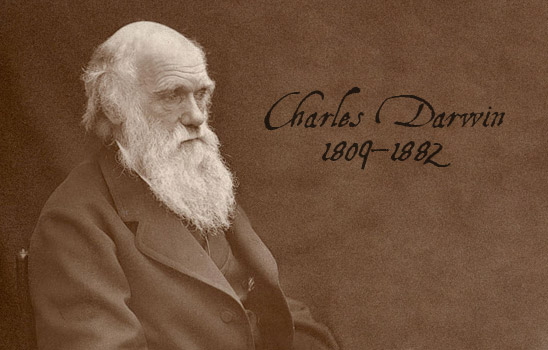
About this week’s eSkeptic
In this week’s eSkeptic, Donald R. Prothero remembers Charles Darwin (on the occasion of what would have been his 203rd birthday this past Sunday). Prothero reminds us that it was 40 years ago this year that the most frequently cited paper in the history of paleontology was published: none other than the legendary 1972 article by Niles Eldredge and Stephen Jay Gould which proposed the “punctuated equilibrium” hypothesis. Prothero also shares some insights from his own research.
Read Prothero’s bio after the article.
Darwin’s Legacy
by Donald R. Prothero
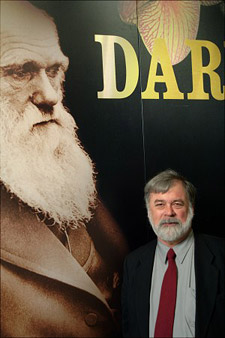
Niles Eldredge as he looks today, Curator Emeritus at the American Museum of Natural History
Last Sunday, February 12, we celebrated the 203rd birthday of two of the most important figures in world history, Abraham Lincoln—and Charles Darwin. To mark the occasion properly, I spent part of my weekend visiting the Creation Museum in Santee, California, with Carrie Poppy and Ross Blocher of the podcast “Oh no, Ross and Carrie!” (more on that trip in my March 7 Skepticblog post). But I thought I’d mark this anniversary with a discussion of another important anniversary in the history of evolutionary science.
It was 40 years ago this year that the most frequently cited paper in the history of paleontology was published. That was none other than the legendary 1972 article by Niles Eldredge and Stephen Jay Gould which proposed the “punctuated equilibrium” hypothesis. (Full disclosure: I took seminars from Niles while I was a student at the American Museum of Natural History, and Steve Gould was very interested in and supportive of my research even though I was not his student in a formal sense). At the time the paper came out, the dominant concept about speciation was the allopatric speciation model. In a nutshell, good biological evidence showed that new species arise not in the large mainland populations (with their extensive gene mixing) but in small isolated populations with unusual gene frequencies (peripheral isolates), usually living separate (allopatric) from the mainland population. Once these allopatric populations were no longer isolated but remixed with the mainland population, they would be genetically and behaviorally distinct from their parent species. Thus, they would be no longer capable of interbreeding, which is part of the definition of a biological species.
Experimental biology … may reveal what happens to a hundred rats in the course of ten years under fixed and simple conditions, but not what happened to a billion rats in the course of ten million years under the fluctuating conditions of earth history. Obviously the latter problem is more important.
Even though the allopatric speciation model was accepted by biologists as early as 1942, it took paleontologists 30 years to recognize its implications. In their historic 1972 paper, Niles and Steve pointed out that if you took Ernst Mayr’s allopatric speciation model seriously, it would predict that species should arise in a normal biological time frame: a few years to a few hundred years at most. That’s a geologic instant, the difference between one bedding plane and the next in strata that span millions of years. The allopatric speciation model also predicted that species should arise in small, peripherally isolated areas, so they were unlikely to be fossilized in the few places for which we have a good fossil record. Rather than slow gradual change through millions of years of strata (the “phyletic gradualism” model), the allopatric speciation model accepted by biologists should give a fossil record where species seem to appear suddenly without any gradual transition preserved (“punctuation”), and then persist for long periods of time without change (“equilibrium”).
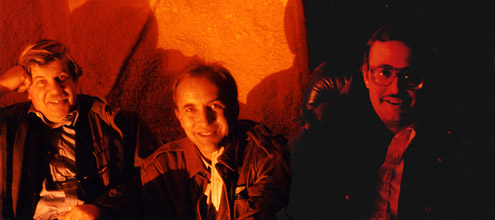
(left–right) Stephen Jay Gould, Michael Shermer, and yours truly, Mt. Wilson Observatory, Pasadena,CA (2001)
The “punctuated equilibrium” paper is a masterpiece of writing and incisive thinking, which poses a number of interesting issues. The first part is a general discourse on the philosophy of science, which argues that all scientists are products of their time and culture and tend to see what they expect to see. In this context, Darwin led paleontologists to expect phyletic gradualism, which they vainly tried to document for over a century before the allopatric speciation model came along. Then Eldredge and Gould introduced the details of the allopatric model, described punctuated equilibrium, and give examples from their own research (phacopid trilobites from Eldredge, Bahamian land snails from Gould). Every time I teach a paleontology class, I always assign the original paper as required reading, and then lead a class discussion section teasing it apart. Like fine wine, the paper gets better every time I reread it. I’m always amazed at what insights it contains, what future debates it triggered or foreshadowed, and how different students pick up different elements when they read it for the first time.
For the first decade after the paper was published, it was the most controversial and hotly argued idea in all of paleontology. Soon the great debate among paleontologists boiled down to just a few central points, which Gould and Eldredge (1977) nicely summarized on the fifth anniversary of the paper’s release. The first major discovery was that stasis was much more prevalent in the fossil record than had been previously supposed. Many paleontologists came forward and pointed out that the geological literature was one vast monument to stasis, with relatively few cases where anyone had observed gradual evolution. If species didn’t appear suddenly in the fossil record and remain relatively unchanged, then biostratigraphy would never work—and yet almost two centuries of successful biostratigraphic correlations was evidence of just this kind of pattern. As Gould put it, it was the “dirty little secret” hidden in the paleontological closet. Most paleontologists were trained to focus on gradual evolution as the only pattern of interest, and ignored stasis as “not evolutionary change” and therefore uninteresting, to be overlooked or minimized. Once Eldredge and Gould had pointed out that stasis was equally important (“stasis is data” in Gould’s words), paleontologists all over the world saw that stasis was the general pattern, and that gradualism was rare—and that is still the consensus 40 years later.
The debate was less than a decade old when I was wrapping up my dissertation work in 1981. In my dissertation on the incredibly abundant and well preserved fossil mammals of the Big Badlands of the High Plains, I had over 160 well-dated, well-sampled lineages of mammals, so I could evaluate the relative frequency of gradualism versus stasis in an entire regional fauna. I also had a wide geographic spread (from Montana and Saskatchewan to Texas, but mostly in the Dakotas, Nebraska, Wyoming, and Colorado). I had large fossil samples of many species, with dozens at each level, and excellent stratigraphic data. When I finally plunged in and plotted and analyzed my data carefully, it was clear that nearly every lineage showed stasis, with one minor example of gradual size reduction in the little oreodont Miniochoerus. I could point to this data set and make the case for the prevalence of stasis without any criticism of bias in my sampling. More importantly, the fossil mammals showed no sign of responding to the biggest climate change of the past 50 million years (the Eocene-Oligocene transition, when glaciers appeared in Antarctica after 200 million years). In North America, dense forests gave way to open scrublands, crocodiles and pond turtles were replaced by land tortoises, and the snails changed from those typical of Nicaragua to those of Baja California. Yet out of all the 160 lineages of mammals in this time interval, there was virtually no response. To paraphrase Rhett Butler, “Frankly, my dear, the mammals don’t give a damn.”
This result intrigued me, so I began to re-examine the uncritical acceptance of the notion that fossil mammals track environmental changes. It occurred to me that our excellent database of North American fossil mammals and global climate change might be a good place to test this hypothesis. In a 1999 paper, I argued that for the four biggest independently documented periods of climatic change in the past 50 million years, the mammals either do not respond at all, or show much less speciation and extinction than they do at times when there is no evidence of climatic change. One interval included the middle-late Eocene climate change at 37 million years ago, when turnover was merely at background level, despite evidence of floral change elsewhere in North America, and a big climatic cooling event in the global oceans. The second was the Eocene-Oligocene transition just discussed. The third was the great expansion of modern grasslands at 7.5 million years ago, long after mammals with high-crowned grazing teeth appeared at 15 million years ago. In fact, there is almost no significant faunal change at 7.5 million years ago. The final example is the last 2 million years of ice ages, when climate changed dramatically, but speciation did not occur in response to climate. Instead, most ice age mammals simply migrated north and south in response to the movements of the ice sheets.
About six years ago, I decided to test this last idea. Back in 2006, I had a bunch of excellent students in my paleontology classes at both Occidental and Caltech, and several wanted to do research with me. I was at a loss over how to supervise so many undergraduates with limited backgrounds, until I realized that we could do a group of related projects practically in our back yard: the Page Museum at La Brea tar pits in Los Angeles. I equipped each one of them with calipers and gave them a measuring protocol, and got them access to the La Brea fossils through the collections managers. Then they each measured a different Ice Age mammal or bird, collecting data on hundreds of bones from all the tar pits with good radiocarbon dates: saber-toothed cats, dire wolves, giant lions, bison, horses, camels, ground sloths, plus the five most common birds: golden and bald eagles, condors, caracaras, and turkeys. After six years of work and publication, the conclusion is clear: none of the common Ice Age mammals and birds responded to any of the climate changes at La Brea in the last 35,000 years, even though the region went from dry chaparral to snowy piñon-juniper forests during the peak glacial 20,000 years ago, and then back to the modern chaparral again.
In four of the biggest climatic-vegetational events of the last 50 million years, the mammals and birds show no noticeable change in response to changing climates. No matter how many presentations I give where I show these data, no one (including myself) has a good explanation yet for such widespread stasis despite the obvious selective pressures of changing climate. Rather than answers, we have more questions—and that’s a good thing! Science advances when we discover what we don’t know, or we discover that simple answers we’d been following for years no longer work.
Clearly, it is an interesting time to be a paleontologist. As Gould (1983) put it, from the “irrelevance” of the early 1900s to the “subservient” role that George Gaylord Simpson placed us in 1944, paleontology is now in the driver’s seat, and trying to reach the “High Table” where the “High Priests” of evolution and genetics have long ruled unchallenged. Who knows where this will all end? Whatever the result, we’re clearly making advances by challenging the accepted dogmas of the time and finding their faults, and hopefully discovering something new and interesting. As Gould and Eldredge (1977) put it, “Why be a paleontologist if we are condemned only to verify what students of living organisms can propose directly?”
References
- Eldredge, N. 1985. Time Frames: The Rethinking of Darwinian Evolution and the Theory of Punctuated Equilibria. Simon & Schuster, New York.
- Eldredge, N. 1995. Reinventing Darwin: The Great Debate at the High Table of Evolutionary Theory. John Wiley & Sons, New York.
- Eldredge, N., and S. J. Gould, 1972. Punctuated equilibria: an alternative to phyletic gradualism, pp. 82-115, in Schoft, T.J.M., Models in Paleobiology. Freeman Cooper, San Francisco.
- Gould, S.J. 1980. Is a new and more general theory of evolution emerging? Paleobiology6: 119–130.
- Gould, S.J. 1982. Darwinism and the expansion of evolutionary theory. Science 216:380–387.
- Gould, S.J. 1983. Irrelevance, submission, and partnership: the changing roles of paleontology in Darwin’s three centennials, and a modest proposal for macroevolution, pp. 347-366, in Bendall, D.S. (ed.), Evolution from Molecules to Men. Cambridge University Press, Cambridge.
- Gould, S.J. 2002. The Structure of Evolutionary Theory. Harvard University Press, Cambridge, Mass.
- Gould, S.J., and Eldredge, N. 1977. Punctuated equilibria: the tempo and mode of evolution reconsidered. Paleobiology 3:115–151.
- Prothero, D.R., 1992. Punctuated equilibrium at twenty: a paleontological perspective. Skeptic 1(3): 38–47.
- Prothero, D.R. 1999. Does climatic change drive mammalian evolution? GSA Today 9(9):1–5.
- Prothero, D.R., Syverson, V., Raymond, K.R., Madan, M., Molina, S., Fragomeni, A., DeSantis, S., Sutyagina, A., and Gage, G.L. (in press) Size and Shape Stasis in Late Pleistocene Mammals and Birds from Rancho La Brea during the last Glacial-Interglacial Cycle. Quaternary Science Reviews(in press)
- Prothero, D.R., and T.H. Heaton, 1996, Faunal stability during the early Oligocene climatic crash. Palaeogeography, Palaeoclimatology, Palaeoecology 127:239–256.
About the Author

DR. DONALD R. PROTHERO was Professor of Geology at Occidental College in Los Angeles, and Lecturer in Geobiology at the California Institute of Technology in Pasadena. He earned M.A., M.Phil., and Ph.D. degrees in geological sciences from Columbia University in 1982, and a B.A. in geology and biology (highest honors, Phi Beta Kappa) from the University of California, Riverside. He is currently the author, co-author, editor, or co-editor of 32 books and over 250 scientific papers, including five leading geology textbooks and five trade books as well as edited symposium volumes and other technical works. He is on the editorial board of Skeptic magazine, and in the past has served as an associate or technical editor for Geology, Paleobiology and Journal of Paleontology. He is a Fellow of the Geological Society of America, the Paleontological Society, and the Linnaean Society of London, and has also received fellowships from the Guggenheim Foundation and the National Science Foundation. He has served as the President and Vice President of the Pacific Section of SEPM (Society of Sedimentary Geology), and five years as the Program Chair for the Society of Vertebrate Paleontology. In 1991, he received the Schuchert Award of the Paleontological Society for the outstanding paleontologist under the age of 40. He has also been featured on several television documentaries, including episodes of Paleoworld (BBC), Prehistoric Monsters Revealed (History Channel), Entelodon and Hyaenodon (National Geographic Channel) and Walking with Prehistoric Beasts (BBC). His website is: www.donaldprothero.com. Check out Donald Prothero’s page at Shop Skeptic.
Our Next Lecture at Caltech:
Dr. Peter Diamandis

Abundance: Why the Future Will Be Much Better Than You Think
with Dr. Peter Diamandis
Baxter Lecture Hall
DATE CORRECTION NOTICE:
This lecture will take place on
Sunday, February 26, 2012 at 2 pm.
It was incorrectly stated as Saturday
in last week’s eSkeptic.
SINCE THE DAWN OF HUMANITY, a privileged few have lived in stark contrast to the hardscrabble majority. Conventional wisdom says this gap cannot be closed. But it is closing—fast. According to the X-Prize creator and entrepreneur Peter H. Diamandis, we will soon be able to meet and exceed the basic needs of every man, woman and child on the planet. Abundance for all is within our grasp through four forces: exponential technologies, the DIY innovator, the Technophilanthropist, and the Rising Billion. Diamandis establishes hard targets for change and lays out a strategic roadmap for governments, industry and entrepreneurs, giving us plenty of reason for optimism.
Tickets are first come, first served at the door. Seating is limited. $8 for Skeptics Society members and the JPL/Caltech community, $10 for nonmembers. Your admission fee is a donation that pays for our lecture expenses.
Followed by…
- The Creative Destruction of Medicine: How the
Digital Revolution Will Create Better Health Care
with Dr. Eric Topol
Sunday, March 11, 2012 at 2 pm
SPECIAL DOUBLE EVENT
Beckman Auditorium, Caltech
Sunday March 25 starting at 2pm

Official Debate Co-Sponsor
The Great Debate:
“Has Science Refuted Religion?”
Sean Carroll & Michael Shermer versus
Dinesh D’Souza & Ian Hutchinson
Debate starts at 2pm
Download Map
Followed by Sam Harris lecturing on Free Will
Lecture starts after the debate
At no extra charge, immediately following the debate is a lecture and book signing on Free Will by Sam Harris.
This Debate/Harris lecture
is now SOLD OUT.
Tickets
The price of admission covers both events: $10 Skeptics Society members/Caltech/JPL community; $15 everyone else. Tickets may be purchased in advance through the Caltech ticket office at 626-395-4652 or at the door. Ordering tickets ahead of time is strongly recommended as this event will sell out. The Caltech ticket office asks that you do not leave a message. Instead call between 12:00 and 5:00 Monday–Friday.

OUR ANNUAL FUNDRAISING DRIVE IS ON NOW
Help Send Skepticism 101 into the World!
- Click here to read our new plan to take Skepticism to the next level!
- Click here to make a donation now via our online store.
Monthly Recurring Donation Options Now Available
We encourage you to choose the monthly recurring donation option. Simply tell us how long you want your donation to recur (using the drop-down menu on the donation page) and we’ll set up automatic withdrawal for the amount you select.
Just for considering a donation, check out our free PDF download
created by Junior Skeptic Editor Daniel Loxton.
Why We Believe in God(s): A Concise Guide
to the Science of Faith
to the Science of Faith
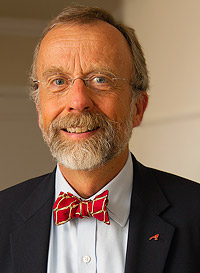
IN THIS LECTURE BASED ON HIS NEW BOOK, psychiatrist Andy Thomson examines the evolution, history, anthropology, sociology, and psychology of religious beliefs and provides a brief and accessible guide to the exciting new discoveries that allow us to finally understand why and how the human mind generates, accepts, and spreads religious faith and god beliefs. Dr. Thomson is a staff psychiatrist at the University of Virginia’s Student Health Center and the Institute of Law, Psychiatry and Public Policy, and maintains a private practice of adult and forensic psychiatry in Charlottesville, Virginia. He serves as a trustee of the Richard Dawkins Foundation for Reason and Science.
TAGS: belief in God, faith, religious beliefs, science of faith, Why We Believe in GodParanormal Beliefs & Education
Does higher education systemically reduce belief? What do we know about this so far? This PowerPoint was used for an in-class presentation (in TEDTalk format) to discuss the correlation between higher education and belief in the paranormal. The presentation was created by Anondah Saide for Dr. Michael Shermer’s course, “Evolution, Economics & the Brain” taught at Claremont Graduate University during the spring 2011 semester.
Do you have ESP?
Have you ever felt like you knew what someone was going to say before they said it? Or that you had a feeling that the phone was going to ring and it did? Have you had a “psychic” tell you something about yourself that s/he couldn’t know without reading your mind? Have you ever thought you had a “sixth sense”? What explains this? Many have experienced one or more of these events, described them as extraordinary, and attributed them to extrasensory perception (ESP). In this exercise you can take your students through the process of finding out (scientifically) whether or not they, or someone they know, has ESP. Designed for grades 9–12. This in-class exercise was created by the James Randi Educational Foundation (JREF) and it answers questions such as: (1) What is ESP? (2) How I you test it? and (3) What is the history of this research?
What is Change Blindness?
This is a student-made, educational video on the psychological phenomenon of “change blindness,” created for Dr. Michael Shermer’s course, “Skepticism 101: How to Think Like a Scientist (Without Being a Geek)” at Chapman University during the fall 2011 semester.
The Moral Landscape:
How Science Can Determine Human Values
How Science Can Determine Human Values
This book was required reading for the following courses: (1) “Evolution, Economics, and the Brain” taught by Michael Shermer, and (2) “Knowledge, Value & Rationality” taught by Peter Boghossian.
Sam Harris’s first book, The End of Faith, ignited a worldwide debate about the validity of religion. In the aftermath, Harris discovered that most people—from religious fundamentalists to nonbelieving scientists—agree on one point: science has nothing to say on the subject of human values. Indeed, our failure to address questions of meaning and morality through science has now become the most common justification for religious faith. It is also the primary reason why so many secularists and religious moderates feel obligated to “respect” the hardened superstitions of their more devout neighbors.
In this explosive new book, Sam Harris tears down the wall between scientific facts and human values, arguing that most people are simply mistaken about the relationship between morality and the rest of human knowledge. Harris urges us to think about morality in terms of human and animal well-being, viewing the experiences of conscious creatures as peaks and valleys on a “moral landscape.” Because there are definite facts to be known about where we fall on this landscape, Harris foresees a time when science will no longer limit itself to merely describing what people do in the name of “morality”; in principle, science should be able to tell us what we ought to do to live the best lives possible. Bringing a fresh perspective to age-old questions of right and wrong and good and evil, Harris demonstrates that we already know enough about the human brain and its relationship to events in the world to say that there are right and wrong answers to the most pressing questions of human life. Because such answers exist, moral relativism is simply false—and comes at increasing cost to humanity. And the intrusions of religion into the sphere of human values can be finally repelled: for just as there is no such thing as Christian physics or Muslim algebra, there can be no Christian or Muslim morality.
12-02-08
In this week’s eSkeptic:
- Follow Michael Shermer: Lies We Tell Ourselves
- Follow Daniel Loxton: Russell’s Hedgehogs and Hirst’s Shark
- MonsterTalk: Monsters in America (interview with Scott Poole)
- Feature Article: How We Know Global Warming is Real and Human Caused
- Lecture this Sunday: Dr. Andy Thomson (Why We Believe in Gods)
- Special Double Caltech Event: A debate, and a lecture (Sam Harris)
- Fundraising Drive on Now: Help Send Skepticism 101 into the World!

NEW ON MICHAELSHERMER.COM
Lies We Tell Ourselves
In his February Skeptic column for Scientific American, Michael Shermer discusses what evolutionary theorist Robert Trivers calls “the logic of deceit and self-deception“ and what it might mean for the evolution of morality.

NEW ON SKEPTICBLOG.ORG
Russell’s Hedgehogs and Hirst’s Shark
In this week’s Skepticblog, Daniel Loxton reflects on the practical challenges of accurate skeptical scholarship—and considers some issues of deeper philosophical uncertainty.

Monsters in America
(interview with Scott Poole)
This week on MonsterTalk, the hosts talk with the author of Monsters In America, Dr. Scott Poole. His book chronicles the history of monsters from colonial America to modern times—and tries to tackle the issue of meaning in a world where monsters are “meaning machines.”
Content Advisory: The content in this episode is rated is PG13.
T-Shirt Contest Winners Announced!
Be sure to read the episode notes to see the winners of the MonsterTalk t-shirt design contest and see the three winning designs.

Donald R. Prothero on Anthropogenic Global Warming
In this week’s eSkeptic, Donald R. Prothero addresses climate change denialism head on, demolishing deniers’ arguments and rebuttals, and clearly demonstrating how we know global warming is real and human caused. Read Prothero’s bio after the article.
How We Know Global Warming is Real
and Human Caused
by Donald R. Prothero
On January 27, 2012, the Wall Street Journal ran an Opinion Editorial written by 16 people who deny the evidence of human-induced climate change. Most of the authors of the editorial were not climate scientists; one of two actual climate scientists of the group, Richard Lindzen, is a notorious global warming denier who also denies that smoking causes cancer. Predictably, the Rupert Murdoch-owned Journal refused to run a statement by 255 members of the National Academy of Sciences, although a “Letter to the Editor” by 38 of the world’s leading climate scientists1 did manage to get published there. The letter pointed out the numerous lies, mistakes, and fallacies in the editorial, along with a scathing rebuke by climate scientist Kevin Trenberth, whose remarks were quoted out of context to make them seem the opposite of what he actually said. As the Trenberth et al. letter pointed out, the 16 authors of the editorial were so far out of their depth in discussing the topic that they were the “climate-science equivalent of dentists practicing cardiology.” And as if to answer the editorial, the earth sent a resounding message in reply. On Feb. 2, 2012, an 18-mile crack appeared in Pine Island Glacier in Antarctica (see photo above and sidebar for details), a prelude to the calving off an iceberg 350 square miles in area, one of the largest icebergs ever seen.2
Converging Lines of Evidence
How do we know that global warming is real and primarily human caused? There are numerous lines of evidence that converge to this conclusion.
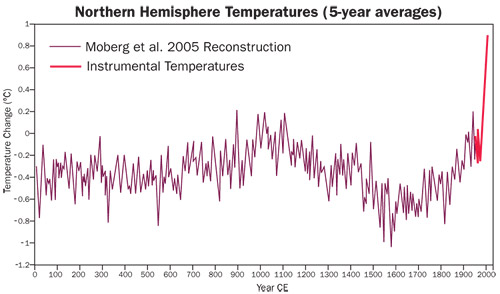
Figure 1. The Moberg et al. (2005) plot (updated from the Mann et al., 1999, plot) of the last 2000 years of earth’s average surface temperature, which shows over 800 years of relative stability followed by the rapid warming of the past two centuries, giving it the shape of a “hockey stick.” The slight warming trend of the Medieval Warm Period can also be seen (data from 900–1200 A.D.) and is nowhere near the magnitude of the warming in the past century. (Click diagrams to enlarge them.)
- Carbon Dioxide Increase. Carbon dioxide in our atmosphere has increased at an unprecedented rate in the past 200 years. Not one data set collected over a long enough span of time shows otherwise. Mann et al. (1999) compiled the past 900 years’ worth of temperature data from tree rings, ice cores, corals, and direct measurements of the past few centuries, and the sudden increase of temperature of the past century stands out like a sore thumb. This famous graph (see Figure 1 above) is now known as the “hockey stick” because it is long and straight through most of its length, then bends sharply upward at the end like the blade of a hockey stick. Other graphs show that climate was very stable within a narrow range of variation through the past 1000, 2000, or even 10,000 years since the end of the last Ice Age. There were minor warming events during the Climatic Optimum about 7000 years ago, the Medieval Warm Period, and the slight cooling of the Little Ice Age from the 1700s and 1800s. But the magnitude and rapidity of the warming represented by the last 200 years is simply unmatched in all of human history. More revealing, the timing of this warming coincides with the Industrial Revolution, when humans first began massive deforestation and released carbon dioxide by burning coal, gas, and oil.
- Melting Polar Ice Caps. The polar icecaps are thinning and breaking up at an alarming rate. In 2000, my former graduate advisor Malcolm McKenna was one of the first humans to fly over the North Pole in summer time and see no ice, just open water. The Arctic ice cap has been frozen solid for at least the past 3 million years and maybe longer3, but now the entire ice sheet is breaking up so fast that by 2030 (and possibly sooner) less than half of the Arctic will be ice covered in the summer.4 As one can see from watching the news, this is an ecological disaster for everything that lives up there, from the polar bears to the seals and walruses to the animals they feed upon, to the 4 million people whose world is melting beneath their feet. The Antarctic is thawing even faster. In February–March 2002, the Larsen B ice shelf—over 3000 square km (the size of Rhode Island) and 220 m (700 feet) thick—broke up in just a few months, a story typical of nearly all the ice shelves in Antarctica. The Larsen B shelf had survived all the previous ice ages and interglacial warming episodes for the past 3 million years, and even the warmest periods of the last 10,000 years—yet it and nearly all the other thick ice sheets on the Arctic, Greenland, and Antarctic are vanishing at a rate never before seen in geologic history.
- Melting Glaciers. Glaciers are all retreating at the highest rates ever documented. Many of those glaciers, especially in the Himalayas, Andes, Alps, and Sierras, provide most of the freshwater that the populations below the mountains depend upon—yet this fresh water supply is vanishing. Just think about the percentage of world’s population in southern Asia (especially India) that depend on Himalayan snowmelt for their fresh water. The implications are staggering. The permafrost that once remained solidly frozen even in the summer has now thawed, damaging the Inuit villages on the Arctic coast and threatening all our pipelines to the North Slope of Alaska. This is catastrophic not only for life on the permafrost, but as it thaws, the permafrost releases huge amounts of greenhouse gases and is one of the major contributors to global warming. Not only is the ice vanishing, but we have seen record heat waves over and over again, killing thousands of people, as each year joins the list of the hottest years on record. (2010 just topped that list as the hottest year, surpassing the previous record in 2009, and we shall know about 2011 soon enough). Natural animal and plant populations are being devastated all over the globe as their environment changes.5 Many animals respond by moving their ranges to formerly cold climates, so now places that once did not have to worry about disease-bearing mosquitoes are infested as the climate warms and allows them to breed further north.
-
Sea Level Rise. All that melted ice eventually ends up in the ocean, causing sea level to rise, as it has many times in the geologic past. At present, sea level is rising about 3–4 mm per year, more than ten times the rate of 0.1–0.2 mm/year that has occurred over the past 3000 years. Geological data show that sea level was virtually unchanged over the past 10,000 years since the present interglacial began. A few millimeters here or there doesn’t impress people, until you consider that the rate is accelerating and that most scientists predict sea level will rise 80–130 cm in just the next century. A sea level rise of 1.3 m (almost 4 feet) would drown many of the world’s low-elevation cities, such as Venice and New Orleans, and low-lying countries such as the Netherlands or Bangladesh. A number of tiny island nations such as Vanuatu and the Maldives, which barely poke out above the ocean now, are already vanishing beneath the waves. Eventually their entire population will have to move someplace else.6 Even a small sea level rise might not drown all these areas, but they are much more vulnerable to the large waves of a storm surge (as happened with Hurricane Katrina), which could do much more damage than sea level rise alone. If sea level rose by 6 m (20 feet), most of the world’s coastal plains and low-lying areas (such as the Louisiana bayous, Florida, and most of the world’s river deltas) would be drowned.
Most of the world’s population lives in coastal cities such as New York, Boston, Philadelphia, Baltimore, Washington, D.C., Miami, Shanghai, and London. All of those cities would be partially or completely under water with such a sea level rise. If all the glacial ice caps melted completely (as they have several times before during past greenhouse episodes in the geologic past), sea level would rise by 65 m (215 feet)! The entire Mississippi Valley would flood, so you could dock your boat in Cairo, Illinois. Such a sea level rise would drown nearly every coastal region under hundreds of feet of water, and inundate New York City, London and Paris. All that would remain would be the tall landmarks, such as the Empire State Building, Big Ben, and the Eiffel Tower. You could tie your boats to these pinnacles, but the rest of these drowned cities would be deep under water.
Climate Deniers’ Arguments and Scientists’ Rebuttals
Despite the overwhelming evidence there are many people who remain skeptical. One reason is that they have been fed lies, distortions, and misstatements by the global warming denialists who want to cloud or confuse the issue. Let’s examine some of these claims in detail:
- “It’s just natural climatic variability.” No, it is not. As I detailed in my 2009 book, Greenhouse of the Dinosaurs, geologists and paleoclimatologists know a lot about past greenhouse worlds, and the icehouse planet that has existed for the past 33 million years. We have a good understanding of how and why the Antarctic ice sheet first appeared at that time, and how the Arctic froze over about 3.5 million years ago, beginning the 24 glacial and interglacial episodes of the “Ice Ages” that have occurred since then. We know how variations in the earth’s orbit (the Milankovitch cycles) controls the amount of solar radiation the earth receives, triggering the shifts between glacial and interglacial periods. Our current warm interglacial has already lasted 10,000 years, the duration of most previous interglacials, so if it were not for global warming, we would be headed into the next glacial in the next 1000 years or so. Instead, our pumping greenhouse gases into our atmosphere after they were long trapped in the earth’s crust has pushed the planet into a “super-interglacial,” already warmer than any previous warming period. We can see the “big picture” of climate variability most clearly in the EPICA (European Project for Ice Coring in Antarctica) cores from Antarctica (see Figure 2 below), which show the details of the last 650,000 years of glacial-interglacial cycles. At no time during any previous interglacial did the carbon dioxide levels exceed 300 ppm, even at their very warmest. Our atmospheric carbon dioxide levels are already close to 400 ppm today. The atmosphere is headed to 600 ppm within a few decades, even if we stopped releasing greenhouse gases immediately. This is decidedly not within the normal range of “climatic variability,” but clearly unprecedented in human history. Anyone who says this is “normal variability” has never seen the huge amount of paleoclimatic data that show otherwise.

Figure 2. The climate record from EPICA core from Antartica. It shows the normal range of climate variability over the past 650,000 years (450,000 years shown here) and the last 6 glacial-interglacial cycles. At no point in any previous interglacial was the carbon dioxide level higher than 300 ppm, or the temperatures so high, yet we are almost to 400 ppm today. This is ironclad evidence that our present episode of warming is not “normal fluctuations.”
- “It’s just another warming episode, like the Mediaeval Warm Period, or the Holocene Climatic Optimum” or the end of the Little Ice Age.” Untrue. There were numerous small fluctuations of warming and cooling over the last 10,000 years of the Holocene. But in the case of the Mediaeval Warm Period (about 950–1250 A.D.), the temperatures increased by only 1°C, much less than we have seen in the current episode of global warming (see Figure 1). This episode was also only a local warming in the North Atlantic and northern Europe. Global temperatures over this interval did not warm at all, and actually cooled by more than 1°C. Likewise, the warmest period of the last 10,000 years was the Holocene Climatic Optimum (5000–9000 B.C.) when warmer and wetter conditions in Eurasia caused the rise of the first great civilizations in Egypt, Mesopotamia, the Indus Valley, and China. This was largely a Northern Hemisphere-Eurasian phenomenon, with 2–3°C warming in the Arctic and northern Europe. But there was almost no warming in the tropics, and cooling or no change in the Southern Hemisphere.7 To the Eurocentric world, these warming events seemed important, but on a global scale the effect is negligible. In addition, neither of these warming episodes is related to increasing greenhouse gases. The Holocene Climatic Optimum, in fact, is predicted by the Milankovitch cycles, since at that time the axial tilt of the earth was 24°, its steepest value, meaning the Northern Hemisphere got more solar radiation than normal—but the Southern Hemisphere less, so the two balanced. By contrast, not only is the warming observed in the last 200 years much greater than during these previous episodes, but it is also global and bipolar, so it is not a purely local effect. The warming that ended the Little Ice Age (from the mid-1700s to the late 1800s) was due to increased solar radiation prior to 1940. Since 1940, however, the amount of solar radiation has been dropping, so the only candidate for the post-1940 warming has to be carbon dioxide.8
- “It’s just the sun, or cosmic rays, or volcanic activity or methane.” Nope, sorry. The amount of heat that the sun provides has been decreasing since 19409, just the opposite of the denialists’ claims. There is no evidence (see Figure 3 below) of increase in cosmic radiation during the past century.10 Nor is there any clear evidence that large-scale volcanic events (such as the 1815 eruption of Tambora in Indonesia, which changed global climate for about a year) have any long-term effect that would explain 200 years of warming and carbon dioxide increase. Volcanoes erupt only 0.3 billion tonnes of carbon dioxide each year, but humans emit over 29 billion tonnes a year11, roughly 100 times as much. Clearly, we have a bigger effect. Methane is a more powerful greenhouse gas, but there is 200 times more carbon dioxide than methane, so carbon dioxide is still the most important agent.12 Every other alternative has been looked at, but the only clear-cut relationship is between human-caused carbon dioxide increase and global warming.
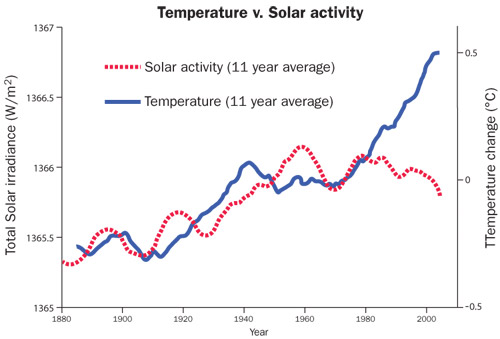
Figure 3. Plot of solar energy input to the earth versus temperature of the last century. The two tend to track each other until the last 30 years, at which time the earth warmed dramatically even as solar input went down.
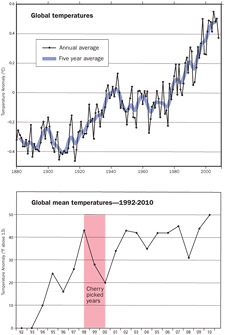
Figure 4a. The plot of global mean temperature over the past century, showing the yearly data (solid black lines) and the smoothed curve using a 5-year rolling average (blue line). Clearly, the trend has been dramatically increasing, and individual data points from one year do not tell the whole story. The anomalous El Niño warm year of 1998 is one of those outliers.
Figure 4b. A detailed plot of the past 20 years of global mean temperatures, showing how anomalous 1998 was. If you cherry-pick 1998 and the two years that followed it, it appears that climate is cooling. However, if you pick any two points other than 1998–2000, or any rolling average, it is clear that climate is warming. Indeed, most of the years from 2002 and on are as warm or warmer than 1998, so any claim that “it has been cooling since 1998” is a lie. The short-term cooling of the 2008 La Niña year can also be seen.
- “The climate records since 1995 (or 1998) show cooling.” That’s a deliberate deception. People who throw this argument out are cherry-picking the data.13 Over the short term, there was a slight cooling trend from 1998–2000 (see Figure 4 below), because 1998 was a record-breaking El Niño year, so the next few years look cooler by comparison. But since 2002, the overall long-term trend of warming is unequivocal. This statement is a clear-cut case of using out-of-context data in an attempt to deny reality. All of the 16 hottest years ever recorded on a global scale have occurred in the last 20 years. They are (in order of hottest first): 2010, 2009, 1998, 2005, 2003, 2002, 2004, 2006, 2007, 2001, 1997, 2008, 1995, 1999, 1990, and 2000.14 In other words, every year since 2000 has been in the Top Ten hottest years list, and the rest of the list includes 1995, 1997, 1998, 1999, and 2000. Only 1996 failed to make the list (because of the short-term cooling mentioned already).
- “We had record snows in the winters of 2009–2010, and in 2010–2011.” So what? This is nothing more than the difference between weather (short-term seasonal changes) and climate (the long-term average of weather over decades and centuries and longer). Our local weather tells us nothing about another continent, or the global average; it is only a local effect, determined by short-term atmospheric and oceanographic conditions.15 In fact, warmer global temperatures mean more moisture in the atmosphere, which increases the intensity of normal winter snowstorms. In this particular case, the climate denialists forget that the early winter of November–December 2009 was actually very mild and warm, and then only later in January and February did it get cold and snow heavily. That warm spell in early winter helped bring more moisture into the system, so that when cold weather occurred, the snows were worse. In addition, the snows were unusually heavy only in North America; the rest of the world had different weather, and the global climate was warmer than average. And the summer of 2010 was the hottest on record, breaking the previous record set in 2009.
- “Carbon dioxide is good for plants, so the world will be better off.” Who do they think they’re kidding? The people who promote this idea clearly don’t know much global geochemistry, or are trying to cynically take advantage of the fact that most people are ignorant of science. The Competitive Enterprise Institute (funded by oil and coal companies and conservative foundations16) has run a series of shockingly stupid ads concluding with the tag line “Carbon dioxide: they call it pollution, we call it life.” Anyone who knows the basic science of earth’s atmosphere can spot the deceptions in this ad.17 Sure, plants take in carbon dioxide that animals exhale, as they have for millions of years. But the whole point of the global warming evidence (as shown from ice cores) is that the delicate natural balance of carbon dioxide has been thrown out of whack by our production of too much of it, way in excess of what plants or the oceans can handle. As a consequence, the oceans are warming18 and absorbing excess carbon dioxide making them more acidic. Already we are seeing a shocking decline in coral reefs (“bleaching”) and extinctions in many marine ecosystems that can’t handle too much of a good thing. Meanwhile, humans are busy cutting down huge areas of temperate and tropical forests, which not only means there are fewer plants to absorb the gas, but the slash and burn practices are releasing more carbon dioxide than plants can keep up with. There is much debate as to whether increased carbon dioxide might help agriculture in some parts of the world, but that has to be measured against the fact that other traditional “breadbasket” regions (such as the American Great Plains) are expected to get too hot to be as productive as they are today. The latest research19 actually shows that increased carbon dioxide inhibits the absorption of nitrogen into plants, so plants (at least those that we depend upon today) are not going to flourish in a greenhouse world. Anyone who tells you otherwise is ignorant of basic atmospheric science.
- “I agree that climate is changing, but I’m skeptical that humans are the main cause, so we shouldn’t do anything.” This is just fence sitting. A lot of reasonable skeptics deplore the “climate denialism” of the right wing, but still want to be skeptical about the cause. If they want proof, they can examine the huge array of data that directly points to humans causing global warming.20 We can directly measure the amount of carbon dioxide humans are producing, and it tracks exactly with the amount of increase in atmospheric carbon dioxide. Through carbon isotope analysis, we can show that this carbon dioxide in the atmosphere is coming directly from our burning of fossil fuels, not from natural sources. We can also measure oxygen levels that drop as we produce more carbon that then combines with oxygen to produce carbon dioxide. We have satellites in space that are measuring the heat released from the planet and can actually see the atmosphere get warmer. The most crucial proof emerged only in the past few years: climate models of the greenhouse effect predict that there should be cooling in the stratosphere (the upper layer of the atmosphere above 10 km (6 miles) in elevation, but warming in the troposphere (the bottom layer of the atmosphere below 10 km (6 miles), and that’s exactly what our space probes have measured. Finally, we can rule out any other culprits (see above): solar heat is decreasing since 1940, not increasing, and there are no measurable increases in cosmic radiation, methane, volcanic gases, or any other potential cause. Face it—it’s our problem.
Why Do People Deny Climate Change?
Thanks to all the noise and confusion over the debate, the general public has only a vague idea of what the debate is really about, and only about half of Americans think global warming is real or that we are to blame.21 As in the debate over evolution and creationism, the scientific community is virtually unanimous on what the data demonstrate about anthropogenic global warming. This has been true for over a decade. When science historian Naomi Oreskes22 surveyed all peer-reviewed papers on climate change published between 1993 and 2003 in the world’s leading scientific journal, Science, she found that there were 980 supporting the idea of human-induced global warming and none opposing it. In 2009, Doran and Kendall Zimmerman23 surveyed all the climate scientists who were familiar with the data. They found that 95–99% agreed that global warming is real and that humans are the reason. In 2010, the prestigious Proceedings of the National Academy of Sciences published a study that showed that 98% of the scientists who actually do research in climate change are in agreement with anthropogenic global warming.24 Every major scientific organization in the world has endorsed the conclusion of anthropogenic climate change as well. This is a rare degree of agreement within such an independent and cantankerous group as the world’s top scientists. This is the same degree of scientific consensus that scientists have achieved over most major ideas, including gravity, evolution, and relativity. These and only a few other topics in science can claim this degree of agreement among nearly all the world’s leading scientists, especially among everyone who is close to the scientific data and knows the problem intimately. If it were not such a controversial topic politically, there would be almost no interest in debating it, since the evidence is so clear-cut.
Reality must take precedence over public relations, for Nature cannot be fooled.
If the climate science community speaks with one voice (as in the 2007 IPCC report, and every report since then), why is there still any debate at all? The answer has been revealed by a number of investigations by diligent reporters who got past the PR machinery denying global warming, and uncovered the money trail. Originally, there was no real “dissenters” to the idea of global warming by scientists who are actually involved with climate research. Instead, the forces with vested interests in denying global climate change (the energy companies, and the “free-market” advocates) followed the strategy of tobacco companies: create a smokescreen of confusion and prevent the American public from recognizing scientific consensus. As the famous memo25 from the tobacco lobbyists said “Doubt is our product.” The denialists generated an anti-science movement entirely out of thin air and PR. The evidence for this PR conspiracy has been well documented in numerous sources. For example, Oreskes and Conway revealed from memos leaked to the press that in April 1998 the right-wing Marshall Institute, SEPP (Fred Seitz’s lobby that aids tobacco companies and polluters), and ExxonMobil, met in secret at the American Petroleum Institute’s headquarters in Washington, D.C. There they planned a $20 million campaign to get “respected scientists” to cast doubt on climate change, get major PR efforts going, and lobby Congress that global warming isn’t real and is not a threat.
The right-wing institutes and the energy lobby beat the bushes to find scientists—any scientists—who might disagree with the scientific consensus. As investigative journalists and scientists have documented over and over again,26 the denialist conspiracy essentially paid for the testimony of anyone who could be useful to them. The day that the 2007 IPCC report was released (Feb. 2, 2007), the British newspaper The Guardian reported that the conservative American Enterprise Institute (funded largely by oil companies and conservative think tanks) had offered $10,000 plus travel expenses to scientists who would write negatively about the IPCC report.27
We are accustomed to the hired-gun “experts” paid by lawyers to muddy up the evidence in the case they are fighting, but this is extraordinary—buying scientists outright to act as shills for organizations trying to deny scientific reality. With this kind of money, however, you can always find a fringe scientist or crank or someone with no relevant credentials who will do what they’re paid to do.

Greenhouse of
the Dinosaurs
by Donald Prothero
Prothero discusses the latest findings in geology and paleontology, providing an insider’s view of the profession. His detailed, first-person narrative allows readers to experience the personalities, the debates, the controversies, the development of new scientific techniques, and the latest scientific findings as they happened. This book is a valuable, no-nonsense, must-read for anyone interested in paleontology or geology, or anyone considering entering those fields.
ORDER the hardcover
The NCSE satirized this tactic of composing phony “lists of scientists” with their “Project Steve.”28 They showed that there were more scientists named “Steve” than their entire list of “scientists who dispute evolution.” It may generate lots of PR and a smokescreen to confuse the public, but it doesn’t change the fact that scientists who actually do research in climate change are unanimous in their insistence that anthropogenic global warming is a real threat. Most scientists I know and respect work very hard for little pay, yet they still cannot be paid to endorse some scientific idea they know to be false.
The climate deniers have a lot of other things in common with creationists and other anti-science movements. They too like to quote someone out of context (“quote mining”), finding a short phrase in the work of legitimate scientists that seems to support their position. But when you read the full quote in context, it is obvious that they have used the quote inappropriately. The original author meant something that does not support their goals. The “Climategate scandal” is a classic case of this. It started with a few stolen emails from the Climate Research Unit of the University of East Anglia. If you read the complete text of the actual emails29 and comprehend the scientific shorthand of climate scientists who are talking casually to each other, it is clear that there was no great “conspiracy” or that they were faking data. All six subsequent investigations have cleared Philip Jones and the other scientists of the University of East Anglia of any wrongdoing or conspiracy.30
Even if there had been some conspiracy on the part of these few scientists, there is no reason to believe that the entire climate science community is secretly working together to generate false information and mislead the public. If there’s one thing that is clear about science, it’s about competition and criticism, not conspiracy and collusion. Most labs are competing with each other, not conspiring together. If one lab publishes a result that is not clearly defensible, other labs will quickly correct it. As James Lawrence Powell wrote31:
Scientists….show no evidence of being more interested in politics or ideology than the average American. Does it make sense to believe that tens of thousands of scientists would be so deeply and secretly committed to bringing down capitalism and the American way of life that they would spend years beyond their undergraduate degrees working to receive master’s and Ph.D. degrees, then go to work in a government laboratory or university, plying the deep oceans, forbidding deserts, icy poles, and torrid jungles, all for far less money than they could have made in industry, all the while biding their time like a Russian sleeper agent in an old spy novel? Scientists tend to be independent and resist authority. That is why you are apt to find them in the laboratory or in the field, as far as possible from the prying eyes of a supervisor. Anyone who believes he could organize thousands of scientists into a conspiracy has never attended a single faculty meeting.
There are many more traits that the climate deniers share with the creationists and Holocaust deniers and others who distort the truth. They pick on small disagreements between different labs as if scientists can’t get their story straight, when in reality there is always a fair amount of give and take between competing labs as they try to get the answer right before the other lab can do so. The key point here is that when all these competing labs around the world have reached a consensus and get the same answer, there is no longer any reason to doubt their common conclusion. The anti-scientists of climate denialism will also point to small errors by individuals in an effort to argue that the entire enterprise cannot be trusted. It is true that scientists are human, and do make mistakes, but the great power of the scientific method is that peer review weeds these out, so that when scientists speak with consensus, there is no doubt that their data are checked carefully.
Finally, a powerful line of evidence that this is a purely political controversy, rather than a scientific debate, is that the membership lists of the creationists and the climate deniers are highly overlapping. Both anti-scientific dogmas are fed to their overlapping audiences through right-wing media such as Fox News, Glenn Beck, and Rush Limbaugh. Just take a look at the “intelligent-design” creationism website for the Discovery Institute. Most of the daily news items lately have nothing to do with creationism at all, but are focused on climate denial and other right-wing causes.32
If the data about global climate change are indeed valid and robust, any qualified scientist should be able to look at them and see if the prevailing scientific interpretation holds up. Indeed, such a test took place. Starting in 2010, a group led by U.C. Berkeley physicist Richard Muller re-examined all the temperature data from the NOAA, East Anglia Hadley Climate Research Unit, and the Goddard Institute of Space Science sources (see Figure 5 below). Even though Muller started out as a skeptic of the temperature data, and was funded by the Koch brothers and other oil company sources, he carefully checked and re-checked the research himself. When the GOP leaders called him to testify before the House Science and Technology Committee in spring 2011, they were expecting him to discredit the temperature data. Instead, Muller shocked his GOP sponsors by demonstrating his scientific integrity and telling the truth: the temperature increase is real, and the scientists who have demonstrated that the climate is changing are right. In the fall of 2011, his study was published, and the conclusions were clear: global warming is real, even to a right-wing skeptical scientist. Unlike the hired-gun scientists who play political games, Muller did what a true scientist should do: if the data go against your biases and preconceptions, then do the right thing and admit it—even if you’ve been paid by sponsors who want to discredit global warming. Muller is a shining example of a scientist whose integrity and honesty came first, and did not sell out to the highest bidder.33
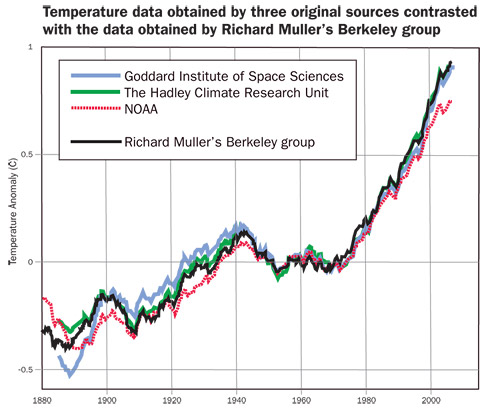
Figure 5. Plot contrasting the temperature data obtained by three original sources (NOAA, Goddard Institute of Space Sciences, and The Hadley Climate Research Unit of the University of East Anglia) with the data obtained by Richard Muller’s Berkeley group, which was originally attempting to deny the evidence of global warming, but found that in fact the original data were correct and the planet is getting warmer.
Science and Anti-Science
The conclusion is clear: there’s science, and then there’s the anti-science of the global warming denial. As we have seen, there is a nearly unanimous consensus among climate scientists that anthropogenic global warming is real and that we must do something about it. Yet the smokescreen, bluster and lies of the deniers has created enough doubt that only half of the American public is convinced the problem requires action. Ironically, the U.S. is almost alone in their denial of this scientific reality. International polls taken of 33,000 people in 33 nations in 2006 and 2007 show that 90% of their citizens regard climate change as a serious problem34 and 80% realize that humans are the cause of it.35 Just as in the case of creationism, the U.S. is out of step with much of the rest of the world in accepting scientific reality.
It is not just the liberals and environmentalists who are taking climate change seriously. Historically conservative institutions (big corporations such as General Electric and many others such as insurance companies and the military) are already planning on how to deal with global warming. Many of my friends high in the oil companies tell me of the efforts by those companies to get into other forms of energy, because they know that oil will be running out soon and that the effects of burning oil will make their business less popular. BP officially stands for “British Petroleum,” but in one of their ad campaigns about 5 years ago, it stood for “Beyond Petroleum.”36 Although they still spend relatively little of their total budgets on alternative forms of energy, the oil companies still can see the handwriting on the wall about the eventual exhaustion of oil—and they are acting like any company that wants to survive by getting into a new business when the old one is dying.
The Pentagon (normally not a left-wing institution) is also making contingency plans for how to fight wars in an era of global climate change, and what kinds of strategic threats might occur when climate change alters the kinds of enemies we might be fighting, and water becomes a scarce commodity. The New York Times reported37 that in December 2008, the National Defense University outlined plans for military strategy in a greenhouse world. To the Pentagon, the big issue is global chaos and the potential of even nuclear conflict. The world must “prepare for the inevitable effects of abrupt climate change—which will likely come [the only question is when] regardless of human activity.”
Insurance companies have no political axe to grind. If anything, they tend to be on the conservative side. They are simply in the business of assessing risk in a realistic fashion so they can accurately gauge their future insurance policies and what to charge for them. Yet they are all investing heavily in research on the disasters and risks posed by climatic change. In 2005, a study commissioned by the re-insurer Swiss Re said, “Climate change will significantly affect the health of humans and ecosystems and these impacts will have economic consequences.”38
Some people may still try to deny scientific reality, but big businesses like oil and insurance, and conservative institutions like the military, cannot afford to be blinded or deluded by ideology. They must plan for the real world that we will be seeing in the next few decades. They do not want to be caught unprepared and harmed by global climatic change when it threatens their survival. Neither can we as a society. ![]()
References
- http://thinkprogress.org/green/2012/02/01/416078/climate-scientists-rebuke-rupert-murdoch-wsj-denier-op-ed-like-dentists-practicing-cardiology/
- http://news.yahoo.com/18-mile-crack-seen-nasa-antarctic-glacier-205345573–abc-news.html
- http://www.homepage.montana.edu/~geol445/hyperglac/time1/time.htm
- Arctic summers ice-free ‘by 2013’. bbc.co.uk. 2007-12-12.
- Barnosky, A.D. 2009. Heatstroke: Nature in an Age of Global Warming. Island Press, Washington, DC.
- http://www.ens-newswire.com/ens/dec2005/2005-12-06-02.asp
- Masson, V., Vimeux, F., Jouzel, J., Morgan, V., Delmotte, M., Ciais,P., Hammer, C., Johnsen, S., Lipenkov, V.Y., Mosley-Thompson, E.,Petit, J.-R., Steig, E.J., Stievenard,M., Vaikmae, R. (2000). “Holocene climate variability in Antarctica based on 11 ice-core isotopic records”. Quaternary Research 54: 348–358. D.S. Kaufman, T.A. Ager, N.J. Anderson, P.M. Anderson, J.T. Andrews, P.J. Bartlein, L.B. Brubaker, L.L. Coats, L.C. Cwynar, M.L. Duvall, A.S. Dyke, M.E. Edwards, W.R. Eisner, K. Gajewski, A. Geirsdottir, F.S. Hu, A.E. Jennings, M.R. Kaplan, M.W. Kerwin, A.V. Lozhkin, G.M. MacDonald, G.H. Miller, C.J. Mock, W.W. Oswald, B.L. Otto-Bliesner, D.F. Porinchu, K. Ruhland, J.P. Smol, E.J. Steig, B.B. Wolfe (2004). “Holocene thermal maximum in the western Arctic (0–180 W)”. Quaternary Science Reviews 23: 529–560.
- http://www.skepticalscience.com/coming-out-of-little-ice-age.htm
- http://www.skepticalscience.com/solar-activity-sunspots-global-warming.htm
- http://www.skepticalscience.com/cosmic-rays-and-global-warming.htm
- http://www.skepticalscience.com/volcanoes-and-global-warming.htm
- http://www.skepticalscience.com/methane-and-global-warming.htm
- http://www.skepticalscience.com/global-warming-stopped-in-1998.htm
- http://www.nicholas.duke.edu/thegreengrok/2008temps
- http://www.skepticalscience.com/global-warming-cold-weather.htm
- http://www.exxonsecrets.org/html/orgfactsheet.php
- http://www.skepticalscience.com/co2-pollutant.htm
- http://www.skepticalscience.com/ocean-and-global-warming.htm
- Bloom, A.J., Burger, M., Asensio, J.S.R., and Cousins, A.B. 2010. Carbon dioxide enrichment inhibits nitrate assimilation in wheat and Arabidopsis. Science 328: 899–903.
- http://www.skepticalscience.com/its-not-us.htm
- http://www.gallup.com/poll/126560/americans-global-warming-concerns-continue-drop.aspx
- Oreskes, N. 2004. Beyond the Ivory Tower: The scientific consensus on climatic change. Science 306: 1686.
- Doran, P., and M. Kendall Zimmerman. 2009. Examining the scientific consensus on climatic change. EOS 90 (3): 22.
- Anderegg, W.R.L., Prall, J.W., Harold, J., and Schneider, S.H. 2010. Expert credibility on climate change. Proceedings of the National Academy of Sciences (USA) 107:12107–12109.
- http://lightbucket.wordpress.com/2008/04/07/doubt-is-our-product-pr-versus-science/
- McCright, A. M., Dunlap, R. E. 2003. Defeating Kyoto: The Conservative Movement’s Impact on U.S. Climate Change Policy. Social Problems 50 (3): 348–373; Curry, J.A., Webster, P.J., and Holland, G.J. 2006. Mixing Politics and Science in Testing the Hypothesis That Greenhouse Warming Is Causing a Global Increase in Hurricane Intensity. Bulletin of the American Meteorological Society 87 (8): 1025–1037; Williams, N. 2005. Heavyweight attack on climate-change denial, Current Biology 15 (4): R109–R110; Mooney, C. 2006. The Republican War on Science. Basic Books, New York; Mooney, C. 2007. Storm World: Hurricanes, Politics, and the Battle over Global Warming. Harcourt, New York.Hoggan, J. 2009. Climate Cover-Up: the Crusade to Deny Global Warming. Greystone, Vancouver, B.C.; Oreskes, N., and Conway, E.M. 2010. Merchants of Doubt: How a handful of scientists obscured the truth on the issues from tobacco smoke to global warming. Bloomsbury Press, New York.
- Ian Sample, “Scientists offered cash to dispute climate study,” The Guardian, 2 Feb. 2007.
- http://ncse.com/taking-action/project-steve
- http://www.realclimate.org/index.php/archives/2009/11/the-cru-hack/
- http://www.washingtonpost.com/wp-dyn/content/article/2010/04/14/AR2010041404001.html
- Powell, J.L. 2011. The Inquisition of Climate Science, p. 187
- http://sensuouscurmudgeon.wordpress.com/2010/03/19/discovery-institute-praises-global-warming-deniers/
- http://articles.latimes.com/2011/apr/04/local/la-me-climate-berkeley-20110404
- http://www.worldpublicopinion.org/pipa/articles/btenvironmentra/187.php?nid=&id=&pnt=187
- http://news.bbc.co.uk/2/hi/in_depth/7010522.stm
- http://www.prwatch.org/node/9038
- http://www.nytimes.com/2009/08/09/science/earth/09climate.html?hp
- Epstein, P.R., Mills, E. (Eds.) 2005. Climate Change Futures: Health, Ecological and Economic Dimensions, Center for Health and the Global Environment, Harvard Medical School, Boston, MA.
About the Author

DR. DONALD R. PROTHERO was Professor of Geology at Occidental College in Los Angeles, and Lecturer in Geobiology at the California Institute of Technology in Pasadena. He earned M.A., M.Phil., and Ph.D. degrees in geological sciences from Columbia University in 1982, and a B.A. in geology and biology (highest honors, Phi Beta Kappa) from the University of California, Riverside. He is currently the author, co-author, editor, or co-editor of 32 books and over 250 scientific papers, including five leading geology textbooks and five trade books as well as edited symposium volumes and other technical works. He is on the editorial board of Skeptic magazine, and in the past has served as an associate or technical editor for Geology, Paleobiology and Journal of Paleontology. He is a Fellow of the Geological Society of America, the Paleontological Society, and the Linnaean Society of London, and has also received fellowships from the Guggenheim Foundation and the National Science Foundation. He has served as the President and Vice President of the Pacific Section of SEPM (Society of Sedimentary Geology), and five years as the Program Chair for the Society of Vertebrate Paleontology. In 1991, he received the Schuchert Award of the Paleontological Society for the outstanding paleontologist under the age of 40. He has also been featured on several television documentaries, including episodes of Paleoworld (BBC), Prehistoric Monsters Revealed (History Channel), Entelodon and Hyaenodon (National Geographic Channel) and Walking with Prehistoric Beasts (BBC). His website is: www.donaldprothero.com. Check out Donald Prothero’s page at Shop Skeptic.
Skeptical perspectives on global warming and climate change…
-
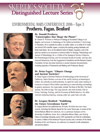 Environmental Wars:
Environmental Wars:
Skeptic Conference 2006 (Part 3)
with Dr. Donald Prothero, Dr. Brian Fagan, and Dr. Gregory Benford
-
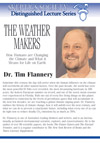 The Weather Makers
The Weather Makers
by Dr. Tim Flannery
-
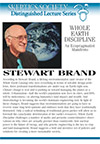 Whole Earth Discipline:
Whole Earth Discipline:
An Ecopragmatist Manifesto
by Stewart Brand
-
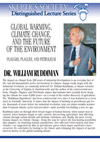 Global Warming, Climate Change
Global Warming, Climate Change
and the Future of the Environment
by Dr. William Ruddiman
Lecture this Sunday:
Dr. Andy Thomson

Why We Believe in God(s):
A Concise Guide to
the Science of Faith
with Dr. Andy Thomson
Sunday, February 12, 2012 at 2 pm
IN THIS LECTURE BASED ON HIS NEW BOOK, psychiatrist Andy Thomson examines the evolution, history, anthropology, sociology, and psychology of religious beliefs and provides a brief and accessible guide to the exciting new discoveries that allow us to finally understand why and how the human mind generates, accepts, and spreads religious faith and god beliefs. Dr. Thomson is a staff psychiatrist at the University of Virginia’s Student Health Center and the Institute of Law, Psychiatry and Public Policy, and maintains a private practice of adult and forensic psychiatry in Charlottesville, Virginia. He serves as a trustee of the Richard Dawkins Foundation for Reason and Science.
Tickets are first come, first served at the door. Seating is limited. $8 for Skeptics Society members and the JPL/Caltech community, $10 for nonmembers. Your admission fee is a donation that pays for our lecture expenses.
Followed by…
- Abundance: Why the Future Will Be Much Better Than You Think
with Dr. Peter Diamandis
Sunday, February 26, 2012 at 2 pm
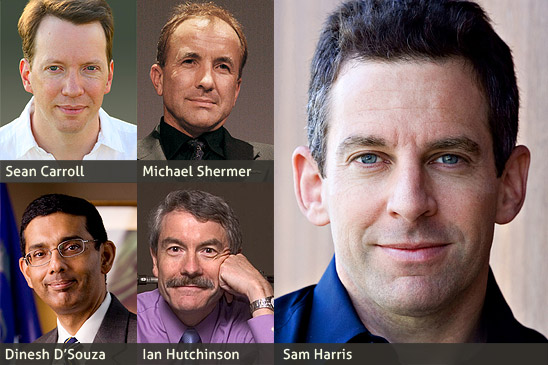
SPECIAL DOUBLE EVENT
Beckman Auditorium, Caltech
Sunday March 25 starting at 2pm

Official Debate Co-Sponsor
The Great Debate:
“Has Science Refuted Religion?”
Sean Carroll & Michael Shermer versus
Dinesh D’Souza & Ian Hutchinson
Debate starts at 2pm
Download Map
Followed by Sam Harris lecturing on Free Will
Lecture starts after the debate
At no extra charge, immediately following the debate is a lecture and book signing on Free Will by Sam Harris.
This Debate/Harris lecture
is now SOLD OUT.
Tickets
The price of admission covers both events: $10 Skeptics Society members/Caltech/JPL community; $15 everyone else. Tickets may be purchased in advance through the Caltech ticket office at 626-395-4652 or at the door. Ordering tickets ahead of time is strongly recommended as this event will sell out. The Caltech ticket office asks that you do not leave a message. Instead call between 12:00 and 5:00 Monday–Friday.

OUR ANNUAL FUNDRAISING DRIVE IS ON NOW
Help Send Skepticism 101 into the World!
- Click here to read our new plan to take Skepticism to the next level!
- Click here to make a donation now via our online store.
Monthly Recurring Donation Options Now Available
We encourage you to choose the monthly recurring donation option. Simply tell us how long you want your donation to recur (using the drop-down menu on the donation page) and we’ll set up automatic withdrawal for the amount you select.
Just for considering a donation, check out our free PDF download
created by Junior Skeptic Editor Daniel Loxton.
But Is It Crazy Enough?
This course was taught at Gettysburg College during the fall 2011 semester.
Excerpt from Syllabus
This course will explore a number of controversial theories in a variety of different, and hopefully fun, ways. It will be somewhat different than most science courses students may have taken up until this point: it will be far more interactive and experimental. Students won’t have any tests; they will have papers, oral presentations, posters, speeches and other activities instead, and run large portions of the course themselves. Students will also have to be a bit more creative than they may be used to in class. They may even find themselves singing through part of it!
By the end of the course, students should have an appreciation for how science is used to sort truth from fiction and what it takes to settle a debate in science. They will also better understand the reason why correct theories may be rejected for decades before being accepted, while others have been proved as false as possible within the realm of science.
Learning goals
- Understand the scientific process and how theories are developed and tested over time.
- Understand how scientific discoveries can affect culture and society, and how society can react to the presentation of controversial scientific ideas.
- Understand how ideas are presented within academia, how peer review works and how to effectively use speeches, written papers, academic posters, Powerpoint and other visual aids to present an argument.
- Understand research tools, databases and other academic resources.
- Be better able to uncover deception in an argument ranging from shading the truth to outright fabrication.
- Understand how a scientific theory can be used politically to justify multiple points of view.
- Be better able to evaluate popular magazine, newspaper and internet articles discussing controversial ideas.
12-02-01
In this week’s eSkeptic:
- follow Michael Shermer: Alfred Russel Wallace: Hyper-Evolutionist
- Skepticality: Interview with Daniele Bolelli
- Season 5: Mr. Deity and the Quitter, Part Deux
- Feature article: On Visions and Resurrections
- Our Next Lecture: Dr. Andy Thomson (Why We Believe in Gods)
- Fundraising Drive on Now: Help Send Skepticism 101 into the World!

NEW ON SKEPTICBLOG.ORG
Alfred Russel Wallace was a Hyper-Evolutionist,
not an Intelligent Design Creationist
In this week’s Skepticblog, Michael Shermer endeavors to enlighten modern thinkers on the perils of misjudging Alfred Russel Wallace as an Intelligent Design creationist, and at the same time reveal the fundamental flaw in both his evolutionary theory and that of this latest incarnation of creationism.

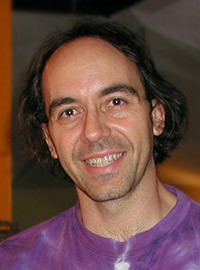
Daniele Bolelli
Interview with Daniele Bolelli
SKEPTICALITY EPISODE 175
This week on Skepticality, Derek chats with Daniele Bolelli, the author of 50 Things You’re Not Supposed To Know: Religion. Daniele is an Italian skeptic and writer, a mixed martial arts (MMA) competitor, and a university professor. His book is part a series being produced by the people behind www.disinfo.com (a website, blog, and podcast). Bolelli currently lives in the United States.
Season 5: Mr. Deity and the Quitter, Part Deux
WATCH THIS EPISODE | DONATE | NEWSLETTER | FACEBOOK | MrDeity.com
Can Hallucination Account for the
Post-Crucifixion Appearances of Jesus?
In this week’s eSkeptic, Gary J. Whittenberger applies the hallucination hypothesis to the alleged post-crucifixion appearance of Jesus summarized in three Gospel stories. Based on careful examination of the Gospels and our current knowledge of the human mind, is the hallucination hypothesis far superior to a resurrection hypothesis in accounting for the “facts” of the post-crucifixion story?
On Visions and Resurrections
by Gary J. Whittenberger
In response to advances in higher biblical criticism, science, philosophy, and skepticism, over the past half century many Christian thinkers have retreated from biblical literalism, arguments from authority, and blind faith in scripture. Instead they have begun to rely more on arguments such as “inference to the best explanation” to defend some of their basic beliefs, including and especially the central dogma that Jesus rose from the dead. According to many modern Christian apologists, there are five “facts” surrounding the death of Jesus which must be explained:
- Jesus was crucified by the Romans in Jerusalem in 30–33 CE.
- It was believed at the time that Jesus had died on the cross.
- Jesus was placed in a tomb on a Friday afternoon.
- The tomb was found to be empty by one or more women on the following Sunday morning.
- It was believed that Jesus met with his followers on several occasions after the tomb was found to be empty.
Most modern Christian apologists not only think that the resurrection hypothesis explains these five “facts” better than any other hypothesis, but they believe it is true beyond a reasonable doubt.
The resurrection story became the cornerstone of the Christian faith early when Paul said “And if Christ be not risen, then is our preaching vain, and your faith is also vain” (I Corinthians 15:14). By contrast, secularists think that other hypotheses explain the “facts” much better, that the resurrection hypothesis is extremely improbable, and that, at this stage in our knowledge, no rational person should believe it.
There are many explantations for the origin of the idea of the Christian resurrection, most notably the idea that it developed from the many earlier pagan traditions of dying and rising gods. But I will focus here on a hypothesis that has recently been the target of renewed Christian attack that can account for the “facts” mentioned at the outset. This hypothesis may be simply stated: After Jesus died from crucifixion and was placed in the tomb, his corpse was removed from the tomb by unknown persons who placed it in an unknown location. Furthermore, after the women discovered the tomb to be empty, one or more of the intimate disciples of Jesus had an auditory-visual vision or hallucination of Jesus, which he or they interpreted as the “risen Jesus,” which became the basis of the Gospel stories and the spreading resurrection belief.
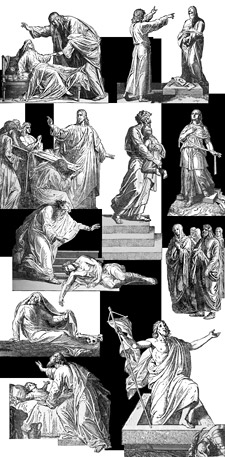
Resurrection in the Bible: (from top left to right) The daughter of Jairus raised by Jesus (Mark 5:39–40); Lazarus, dead for four days raised by Jesus (John 11:1–45); The Widow’s son raised by Jesus (Luke 7:12–17); The son of the Widow of Zarephath raised by Elijah (1 Kings 17:21–24); Dorcus, or Tabitha raised by Peter (Acts 9:36–43); Eutychus, raised by Paul (Acts 20:9–12); A number of people raised around the time of the death and resurrection of Jesus (Matthew 27:51–53); A man whose body touches Elisha’s bones (2 Kings 13:20–21); The Shunammite’s son raised by Elisha (2 Kings 4:32–35); The resurrection of Jesus (Matthew 28:5–7) (Luke 24:1–8) (John 20:1–9).
The purpose of this essay is to demonstrate that the hallucination hypothesis is a plausible explanation of the post-crucifixion “appearances” of Jesus, and to defend it against some of the current criticisms of Christian apologists.
In the Gospels there are eight stories about appearances of Jesus to his followers after his crucifixion. These appear near the ends of three of the Gospels—Matthew, Luke, and John. It is now acknowledged by most New Testament scholars that in the original Gospel of Mark there were no stories of Jesus’ post-crucifixion appearances. In this essay, for the sake of simplicity, I will address only three of the eight appearance stories —the ones in which Jesus appears to a group of most of the disciples, either 10 or 11 of them. These three stories in three different Gospels appear to refer to the same event. The other five stories are not replicated across all three Gospels.
In Matthew 28:16–20, it is said that Jesus met with 11 of his disciples (apparently excluding Judas) on a mountain in Galilee to which he had directed them. Even though some of the disciples had doubts about what was happening (unspecified in the text), Jesus supposedly instructed the disciples to go out into the world to preach and baptize. It is significant that in this account Jesus mentions the three persons who later came to be called the “Trinity.”
According to the second story (much more complex than the first), taken from Luke 24:36–53, Jesus met with an unspecified number of disciples in Jerusalem and nearby Bethany. He supposedly opened by saying “Peace be unto you.” Then, apparently to confirm his identity, Jesus drew attention to his hands and feet and urged the disciples to touch him. The story does not say whether they took him up on the offer. Then, apparently to confirm his corporeality, Jesus asked for food, received it, and ate it. Jesus told them that what had happened to him was a fulfillment of scripture that a special one should suffer, die, and be raised from the dead on the third day. Finally, he urged them to carry his message to the world, starting in Jerusalem, and then he ascended into the sky.
In the third story found in John 20:19–23, Jesus met with 10 of the disciples (apparently excluding Judas and Thomas) in a closed room somewhere near Jerusalem supposedly on the same day that the women had found the empty tomb. In this account Jesus also started by saying “Peace be unto you,” and he said this a second time during the meeting. He drew attention to his hands and side (not his feet). He urged the disciples to go into the world and preach, he assigned them the authority to remit sins, and he breathed on them the “Holy Ghost.” I am assuming that all three of these stories are referring to the same event, whether that event was an actual meeting of the risen Jesus with the disciples, the core of a vision, or the product of fabrication. This assumption is justified because all three of the stories share three elements:
- Jesus meets with a large group of disciples (10 or 11); they see and hear him.
- Jesus instructs the group to go out into the world and preach.
- The meeting occurs post-crucifixion.
Only one such meeting is mentioned in Matthew and Luke, but two similar meetings are mentioned in John, only the first of which is considered here. Any reasonable hallucination hypothesis must provide an adequate account of this basic narrative in which Jesus meets with the large group of disciples. A careful analysis shows that there are only two other elements that are common to two of the three stories (Luke and John)—Jesus says “Peace be unto you,” and he draws attention to his hands. All other elements are unique to the three individual stories.
Given that Jesus’ disciples lived with him for two or three years, loved him deeply, and were greatly bereaved upon learning of his crucifixion, it is highly likely that one or more of them had something like a “grief hallucination” shortly after his assumed death. Christian apologist Michael Licona, who dismisses any hallucination hypothesis, nevertheless provides some current data that supports this idea. He writes: “About 15 percent of the population experience one or more hallucinations during their lifetime” and “senior adults who are in the midst of bereaving the loss of a loved one belong to a group that experiences one of the highest percentages of hallucinations: a whopping 50 percent!”1 In a study from 1971, William Rees tallied different types of hallucinations within a bereaved sample, finding that 39% of his sample “felt the presence” of the deceased, 14% saw him/her, 13% heard him/her, and even 2% felt the touch of the dead loved one.2 In a more recent study from 1993, A. Grimby found that 50% of her grieving sample “felt the presence” of the deceased, 26% saw him/her, and 30% heard him/her.3 Given the conditions in which the disciples found themselves, it would be surprising if one or two of the 10 or 11 (9–20%) did not experience a hallucination of Jesus. This one hallucination (or two) probably formed the basis of the single appearance story discussed earlier.
Perhaps the most common objection to the hallucination hypothesis is that it is impossible or improbable that 10 or 11 disciples would have had the same hallucination of Jesus at the same time. For example, Licona says “Moreover, it must likewise be proposed that when these hallucinations occurred, they just happened to do so simultaneously.”4 Elsewhere he and Gary Habermas note “we know that hallucinations are private occurrences, which occur in the mind of an individual. They are not collective experiences. In a group, all of the people may be in the frame of mind to hallucinate, but each experiences hallucinations on an individual basis. Nor will they experience the same hallucination.”5 To support his position, Licona cites psychologist Gary A. Sibcy, who writes: “I…have yet to find a single documented case of a group hallucination, that is, an event for which more than one person purportedly shared in a visual or other sensory perception where there was clearly no external referent.”6
Apparently, Sibcy did not find the documented cases discovered by investigative journalist and paranormal researcher Joe Nickell: Eugene Barbadette, his brother Joseph, and others saw the Virgin Mary at Pontmain, France, on January 17, 1971.7 Lucia de Jesus dos Santos and her two cousins saw the Blessed Mary several times, including the sighting on July 13, 1817, in Fatima, Portugal.8 More recently, Maria Cruz Gonzalez and her three companions also saw the mother of Jesus in the little village of San Sebastian de Garabandal, Spain, on July 2, 1961.9 The reports of these three cases resemble our target story about Jesus’ meeting with the disciples in the sense that more than one person “saw and heard” another person, a religious figure, assumed to have been dead. In the three cases cited by Nickel, it can be assumed that there was “no external referent” since there were other persons present at the time who neither saw nor heard the Blessed Mary. Although a “conspiracy of deception” hypothesis might be a plausible alternative to the “shared hallucination” hypothesis for these cases, this is also true for the Jesus story. Suffice it to say, it is possible for more than one person in a group to have a hallucination with similar content.
Let us suppose for a moment that only one disciple had a grief hallucination of Jesus. Could this account for our target story? Yes, it could. Here’s how: While by himself, one disciple might have had an auditory/visual hallucination not only of Jesus but of his fellow disciples within the same perceptual frame. A report of this experience could be easily transformed into the story “The disciples met with the risen Jesus.” Another plausible alternative is that while in the presence of the other disciples, one disciple might have had the hallucination of Jesus only, but this was combined in the same perceptual frame with a sensing of the other disciples actually present. And still, the rumor which was passed around could have been “The disciples met with the risen Jesus.”
Now let’s deal with the possibility that two disciples in a group had the same hallucination of Jesus at the same time. Could this happen? Even Habermas and Licona admit, “In a group, all of the people may be in the frame of mind to hallucinate.”10 Different people in a group can hallucinate at the same time! This is more likely if the people share a common psychological context than if they do not. Surely, if the disciples were meeting together and grieving the death of their beloved Jesus, they would be sharing a common psychological context, and it would not be particularly surprising if more than one of them hallucinated Jesus within the same short period of time. But would their hallucinations be identical? Of course not! But might they be similar? Yes, they might. Two disciples might have had simultaneous hallucinations of Jesus which, if the reports of these experiences had been carefully compared in some kind of debriefing, they would likely show variation in details such as what Jesus was wearing, how injured he looked, what gestures he used, and what he said and did. The two disciples might have simply agreed afterwards that they saw/heard Jesus, but never compared their individual experiences in any detail. Any rumor that subsequently led to our targeted Gospel story might have been based on only a single report from one of the two simultaneously hallucinating disciples or on a melding of two reports.
Particularly striking is the alleged statement of Jesus “Peace be unto you” which appears once in the Luke version and twice in the John version of the post-crucifixion story. Because it is short and pithy and it is the type of thing that Jesus might have said to his disciples over and over again when he was alive—as a greeting or as a good-bye—it is a good candidate for inclusion in a grief hallucination. My hypothesis is that during the week after the crucifixion of Jesus one influential disciple (perhaps two) had an auditory-visual grief hallucination of Jesus who said “Peace be unto you.” This hallucination either included the other disciples in the perceptual frame or was experienced in their presence. I suspect that a report of this hallucination formed the core of our target story and that the other details of the three Gospel versions of the story are embellishments, primarily designed for theological, pedagogical, or apologetic purposes. My hypothesis accounts for the “facts” of our case and is far more likely to be true than the hypothesis that Jesus died, came back to life, met with his disciples, and ascended into the sky.
In their critique of the hallucination hypotheses, Habermas and Licona contend “hallucinations do not account for the empty tomb.”11 Well, of course they don’t! They aren’t supposed to. The empty tomb is explained by a different hypothesis— unknown persons removed the corpse from the tomb and placed it in an unknown location. Habermas and Licona fail to connect the right hypothesis to the right “fact” to be explained. On the other hand, there are good reasons to believe that grief hallucinations about Jesus would be more likely to occur if the tomb were found to be empty than if it were found to still contain the body of Jesus. The knowledge of the empty tomb would set the stage for one part of the mind of a bereaved disciple to subconsciously create a hallucination of Jesus and interpret it as support for the “risen Jesus” idea.
On this matter, the prominent Christian apologist William Lane Craig has commented: “The disciples were not psychologically disposed to produce hallucinations. Visions require either a special state of mind or artificial stimulus through medicines in order to occur. But the disciples after Jesus’ crucifixion were utterly crushed and in no frame of mind to hallucinate.”12 In point of fact, in the grief hallucination hypothesis, it is because the disciples were “utterly crushed” they were in a “special state of mind” which made them highly “disposed to produce hallucinations.” Setting aside cases of extreme mental illness and substance intoxication, profound grief may be the special state of mind most often associated with the experience of hallucinations.
Craig has asserted that a hallucination hypothesis cannot account for several facts, but he appears to be mistaken in all respects. He writes, for example, “it cannot explain how in so short a time hallucinatory experiences could be completely transformed into the gospel appearance stories.”13 First, the experiences would not have been completely transformed into the gospel narratives, but would have formed the core of the narratives and been embellished. Second, the actual time gap between hallucination and gospel narrative would not have been “so short a time,” but would have been 40–70 years! As well, Craig asserts that the hallucination hypothesis cannot explain “why the eyewitnesses to those experiences should have had absolutely no control on the development of the accounts of what had really happened.”13 In this case we must assume that the “eyewitnesses to those experiences” are identical to the hallucinating persons. However, Craig presents no evidence to support his assumption that they “had absolutely no control on the development.” They probably had some control, especially if they repeated the report of their hallucinatory experience. Further, there would be a very good reason why they might have lost control over their initial reports— they were probably dead by the time the Gospel narratives were written! A disciple only 20 years old in 30 CE—roughly when Jesus was crucified—would have to have been between 60 and 90 years old when the three Gospels were written. According to a life expectancy table presented by historian Richard Carrier, the probability that a person would have been this old in the first century would have been less than .02.14 But even if they were alive, the disciples were probably too far removed in terms of geographical distance and competence in the Greek language from the actual Gospel writers to have significant influence after rumors had spread. Finally, Craig proclaims, “The theory cannot account for the early believers’ distinguishing precisely between a mere vision and an actual appearance of Jesus.”15 Surely some who experience grief hallucinations conclude afterwards that they were hallucinating, but some do not—they sincerely believe that their loved one was present. There probably was a mixture of opinion about the appearance of Jesus among the disciples, and this conclusion is supported by the words in Matthew “but some doubted,” which will be discussed in greater detail below.
Craig, the most prolific of the hallucination critics, has noted, “Hallucinations would never have led to the conclusion that Jesus had been raised from the dead…in a hallucination, a person experiences nothing new. That is because the hallucination cannot exceed the content of the person’s mind. But as we shall see, the resurrection of Jesus involved ideas utterly foreign to the disciples’ minds.”16 In a hallucination, as well as in a dream, a person can experience something new in the sense that he/she may creatively combine snippets of past perceptions into a unique combination. In this process the hallucination does not “exceed the content of the person’s mind.” However, given the content of a hallucination in which Jesus is seen and heard to say to his assembled disciples “Peace be unto you,” there is nothing new or “utterly foreign” here to the disciples’ minds. Craig seems to be confusing the raw hallucination experience “That is my Lord standing there!” with the conclusion “Jesus must have come back to life.” The two are not the same, even though they are related. If a disciple believed that Jesus had died during the crucifixion, knew that the tomb was empty, and then “saw and heard” Jesus in a grief hallucination which he thought was “real,” then it would be easy or natural for him to conclude that Jesus had come back to life.
Craig thinks that because the disciples were Jews they would never have come to this conclusion because their religion required them to believe that no resurrections would occur before all persons were raised from the dead at the end of times.17 However, on close examination, this makes little sense. The disciples already believed in the possibility—or even the reality—of individual resurrections. Didn’t they know that some Jews thought that Jesus was John the Baptist raised from the dead (Mark 6:14)? Didn’t they have the example of Jesus raising Lazarus from the dead (John 11:1–46)? Didn’t they hear the stories of individual resurrections described in their scriptures? Didn’t Jesus repeatedly tell them that he would come back to life in roughly three days (Mark 8:31, 10:34; Matthew 12:40, 16:21, 17:23, 20:19; Luke 9:22, 18:33; John 2:19)? Another possibility is that the disciples might have believed that Jesus was the first to be resurrected at the end of times about to commence. Adding these familiar ideas of individual and final-days’ resurrections to their knowledge of the crucifixion and the empty tomb, and to an intense grief hallucination taken as “real,” it is probable that at least one or two of the disciples would have concluded that Jesus had been raised from the dead. Had these disciples been leaders, such as Peter or John, most of the others would have gone along with them. Heightened emotion, pressures to conform, group loyalty, and wishful thinking would have facilitated the adoption of the resurrection belief by most of the group.
If a risen Jesus actually met with his disciples, it is not likely that we would see the differences in major details that we actually see in the three versions of the story from the different Gospels. In Matthew, Jesus allegedly meets with the disciples in Galilee, but in Luke and John, he supposedly meets with them in or near Jerusalem. In Matthew, Jesus specifically mentions the three components of the Trinity, but not in Luke and John. In Luke, Jesus draws attention to his hands and feet, in John he focuses on his hands and side, but in Matthew he mentions none of these. Jesus ate food in Luke’s account, but not in Matthew’s and John’s. Jesus discusses the fulfillment of scripture in Luke, but not in the other two versions. In John, Jesus gives his disciples the authority to forgive sins and breathes the Holy Spirit onto them, but this does not happen in the other two versions. These differences are not about piddling details; they are about major points! If a risen Jesus had actually met with his disciples, we would expect that the Gospel writers would have done careful research and gotten the major details correct, yielding a more consistent story from Gospel to Gospel. The different details point to competing theologies, attempts to fill in gaps, and/or to efforts to answer or silence critics.
Unfortunately, the Gospel stories about the post-crucifixion appearances of Jesus constitute poor evidence for approaching a confirmation or a disconfirmation of either the hallucination hypothesis or the resurrection hypothesis. Why? These stories were written 40–70 years after the crucifixion. The authors clearly identify neither themselves nor any sources they might have used. The stories are written in the third-person rather than in the first-person, which would have been the likely reporting mode of an actual eyewitness or hallucinating subject. The specification of places, dates, and times is unreliable. There are no good reasons to conclude that these stories were written by any of the disciples or actual contemporaries of Jesus. If all 10 or 11 disciples had written (or even dictated) clear and comprehensive independent first-hand reports about their experience of, or connection to, the alleged appearance of Jesus, then we’d have some good evidence to work with. If we had this kind of evidence, then we’d be able to compare the reports and come much closer to the truth. What we can firmly conclude with the evidence we have is that the hallucination hypothesis cannot be ruled out, and it certainly has a much greater a priori probability than does the resurrection hypothesis.
A detail cited earlier tips the balance of evidence in favor of the hallucination hypothesis and against the resurrection hypothesis. Referring to our same target story, Matthew 28:17 states “And when they saw him they worshiped him, but some doubted.” This means that at the same time in which the disciples saw and worshiped Jesus, some in the group doubted! But how many doubted and who were they? What did they doubt? Did they doubt that Jesus was actually present? Did they not have a hallucination that others had? Did they have a hallucination that others had but concluded that it did not represent the real presence of Jesus? Did they think that a man in front of them was not actually Jesus but somebody else? We can’t answer these questions. However, if the resurrection hypothesis were true and Jesus was really standing among his disciples, it is very unlikely that some would doubt. On the other hand, if one or two disciples experienced a hallucination of Jesus and the others did not, then it is very likely that some would doubt.
Christian apologists often say that most of the disciples were eventually killed because they refused to recant their belief in the resurrection of Jesus and that this would not have occurred if they knew their belief had come from their own or someone else’s fabrication.18 It is not clear from the record that all those disciples who were executed were killed specifically because of their belief in the resurrection, but let’s suppose that some of them were. Although it does seem unlikely that they would die for a lie, it seems plausible or even likely that they would die because of a hallucination which they were unable to distinguish from reality. It is not uncommon for people to be willing to become martyrs on account of their sincerely held religious beliefs. The 9-11 terrorist attacks are ample evidence of this.
The hallucination hypothesis was applied here to only one alleged post-crucifixion appearance of Jesus summarized in three Gospel stories. It may or may not apply to the other five appearance stories. Secular or naturalistic hypotheses must be, or have already been, developed to account for them. For the most part, attacks on hallucination hypotheses by Christian apologists have been ill conceived and uninformed by modern psychology. Based on careful examination of the Gospels and our current knowledge of the human mind, it appears that a hallucination hypothesis is far superior to a resurrection hypothesis in accounting for the “facts” of the post-crucifixion story. Secular or naturalistic hypotheses easily account for the data we have, the resurrection hypothesis is “superimprobable,”19 and thus at this state of our knowledge we should be skeptical of it. ![]()
References
- Licona, Michael R. 2010. “Were the Resurrection Appearances of Jesus Hallucinations?” Evidence for God: 50 Arguments for Faith from the Bible, History, Philosophy, and Science. William Dembski and Michael R. Licona (Eds.). Grand Rapids: Baker Books, 177.
- Rees, W. D. 1971. “The Hallucinations of Widowhood.” British Medical Journal 4.37: 37–41.
- Grimby, A.1993. “Bereavement Among Elderly People: Grief Reactions, Post-bereavement Hallucinations and Quality of Life.” Acta Psychiatrica Scandanavica 87.1: 72–80. Cited in Archer, John. 1999, The Nature of Grief: The Evolution and Psychology of Reactions to Loss. New York: Brunner-Routledge, 79.
- Licona. 177.
- Habermas, Gary R., and Michael R. Licona. 2004. The Case for the Resurrection of Jesus. Grand Rapids: Kregel, 106.
- Licona. 178.
- Nickell, Joe. 1998. Looking for a Miracle: Weeping Icons, Relics, Stigmata, Visions & Healing Cures. Amherst, New York: Prometheus, 174.
- Nickell. 176–177.
- Nickell. 181–182.
- Habermas and Licona. 106.
- Habermas and Licona. 107.
- Craig, William Lane. 2000. The Son Rises: The Historical Evidence for the Resurrection of Jesus. Eugene, Oregon: Wipf and Stock, 120.
- Craig. 119.
- Carrier, Richard C. 2004. “Reply to McFall on Jesus as a Philosopher.” Accessed September 7, 2011. http://www.richardcarrier.info/McFallRebuttal1.html#s9
- Craig. 120.
- Craig. 121.
- Craig. 129.
- Habermas and Licona. 59.
- Whittenberger, Gary J. 2010. God Wants You to be an Atheist: The Startling Conclusion from a Rational Analysis. Denver: Outskirts Press, 98.
Skeptical perspectives on Jesus and the Bible…
-
 Misquoting Jesus: The Story Behind
Misquoting Jesus: The Story Behind
Who Changed the Bible and Why
by Bart D. Ehrman -
An excellent introduction to modern bible scholarship by one of the world’s leading experts. Dr. Bart Ehrman explains how the New Testament texts have changed over the centuries and describes the methods scholars use to determine what has changed. Changes have occurred both through scribal errors and through deliberate alterations made for cultural and political purposes. While some of these changes are inconsequential, others have profoundly affected religious doctrine… GET THE BOOK.
-
 Secret Origins Of the Bible
Secret Origins Of the Bible
by Tim Callahan
Upcoming Lecture at Caltech:
Dr. Andy Thomson

Why We Believe in God(s):
A Concise Guide to
the Science of Faith
with Dr. Andy Thomson
Sunday, February 12, 2012 at 2 pm
IN THIS LECTURE BASED ON HIS NEW BOOK, psychiatrist Andy Thomson examines the evolution, history, anthropology, sociology, and psychology of religious beliefs and provides a brief and accessible guide to the exciting new discoveries that allow us to finally understand why and how the human mind generates, accepts, and spreads religious faith and god beliefs. Dr. Thomson is a staff psychiatrist at the University of Virginia’s Student Health Center and the Institute of Law, Psychiatry and Public Policy, and maintains a private practice of adult and forensic psychiatry in Charlottesville, Virginia. He serves as a trustee of the Richard Dawkins Foundation for Reason and Science.
Tickets are first come, first served at the door. Seating is limited. $8 for Skeptics Society members and the JPL/Caltech community, $10 for nonmembers. Your admission fee is a donation that pays for our lecture expenses.
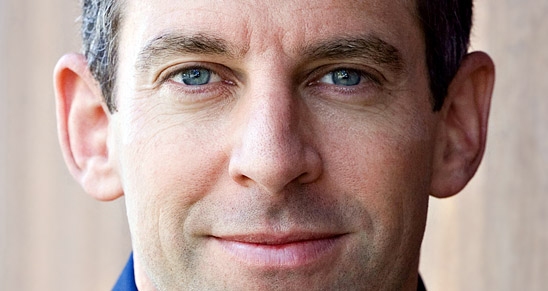
Sam Harris to Speak about
Free Will for Skeptics at Caltech
2:00 PM SUNDAY MARCH 25
Beckman Auditorium, Caltech
Download Map
Don’t miss Sam Harris’ lecture on the topic of Free Will, based on his new book. Harris presents at 3:45 pm, right after the debate scheduled at 2:00 pm. The price of admission covers both events: $10 Skeptics Society members/ Caltech/JPL community; and $15 for everyone else.
This lecture is
SOLD OUT.
Please call between 12:00 and 5:00 pm Monday through Friday. The Caltech ticket office asks that you do not leave a message.

OUR ANNUAL FUNDRAISING DRIVE IS ON NOW
Help Send Skepticism 101 into the World!
- Click here to read our new plan to take Skepticism to the next level!
- Click here to make a donation now via our online store.
Monthly Recurring Donation Options Now Available
We encourage you to choose the monthly recurring donation option. Simply tell us how long you want your donation to recur (using the drop-down menu on the donation page) and we’ll set up automatic withdrawal for the amount you select.
Just for considering a donation, check out our free PDF download
created by Junior Skeptic Editor Daniel Loxton.
12-01-25
In this week’s eSkeptic:

Sam Harris to Speak about
Free Will for Skeptics at Caltech
2:00 PM SUNDAY MARCH 25
Beckman Auditorium, Caltech
Download Map
The Skeptics Society is pleased to add Sam Harris as a bonus to its Spring 2012 Distinguished Science Lecture Series at Caltech. Dr. Harris will speak on the topic of Free Will, the title of his new book, which he will be signing immediately after the lecture.
The Skeptics Society already has a debate scheduled that date: “Has Science Refuted Religion?” featuring Caltech cosmologist Sean Carroll and Skeptic publisher Michael Shermer v. MIT physicist Ian Hutchinson and Christian apologist Dinesh D’Souza
ORDER TICKETS
This lecture is
SOLD OUT.
Please call between 12:00 and 5:00 pm Monday through Friday. The Caltech ticket office asks that you do not leave a message.
Order your tickets right away at the Caltech Public Events office as this event will sell out! The price of admission for both events remains the same: $10 Skeptics Society members/ Caltech/JPL community; and $15 for everyone else.
Sam Harris is the author of the New York Times bestsellers, The Moral Landscape, The End of Faith and Letter to a Christian Nation. His new book is short (96 pages), to the point, and will change the way we all view free will, as Oliver Sacks wrote: “Brilliant and witty—and never less than incisive—Free Will shows that Sam Harris can say more in 13,000 words than most people do in 100,000.” UCSD neuroscientist V.S. Ramachandran notes: “In this elegant and provocative book, Sam Harris demonstrates—with great intellectual ferocity and panache—that free will is an inherently flawed and incoherent concept, even in subjective terms. If he is right, the book will radically change the way we view ourselves as human beings.”
Don’t miss this spectacular day of disputation and debate!
Sum Ergo Cogito—
I Am Therefore I Think.
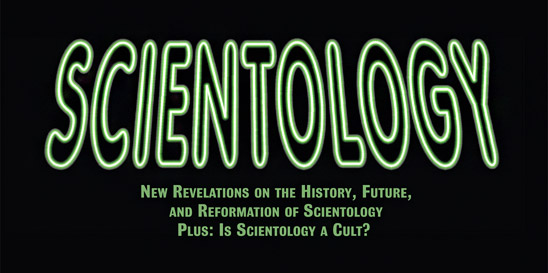
Skeptic Magazine 17.1: SCIENTOLOGY
Order a subscription to Skeptic magazine and get the Scientology issue as your first issue! Topics in this issue include:
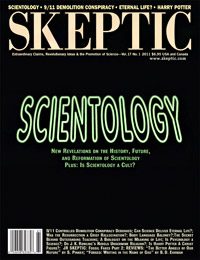
- Is Scientology a Cult?
- New Revelations on the History, Future, and Reformation of Scientology
- 9/11 Controlled Demolition
Conspiracy Debunked - Can Science Deliver Eternal Life?
- Was the Resurrection a Grief Hallucination?
- Body Language Baloney?
- The Secret Behind
Outstanding Teaching - A Biologist on the Meaning of Life…
- Is Psychology a Science?
- Do J. K. Rowling’s Novels
Undermine Religion? - a special section on life after death
- Junior Skeptic: Fossil Fakes Part 2
- book review of Steven Pinker’s The Better Angels of Our Nature
- book review of Richard Horne’s A is for Armageddon: A Catalogue of Disasters That May Culminate in the End of the World As We Know It
- plus more…
Current subscribers should receive this issue by mid-February 2012. This will be available for purchase as a single back issue in a couple weeks.
ÉPOCA Magazine Interviews Michael Shermer
In this week’s eSkeptic, we present Peter Moon’s interview with Michael Shermer on why people believe weird things. This interview first appeared in Portuguese in the magazine ÉPOCA on January 16, 2012. Thank you to Michael Silva for translating the interview.
People Like to be Fooled
interview by Peter Moon
translation by Michael Silva
The psychologist and American writer, Michael Shermer, says that it’s easier to believe in weird things—like mediumship, horoscopes and flying saucers—than to think and question. The difference between a magician and a medium is that the magician confesses that he uses tricks, while the paranormalist says he has powers that enable him to read minds, predict the future or talk with the dead. “All a medium must say is that he has powers and people will believe him. It is part of human nature”, says the psychologist and American writer Michael Shermer, 57 years old, director of the Skeptic Society and Skeptic Magazine. “We didn’t evolve to doubt or have a skeptical view. This requires education and reflection. Believing is easier.” In this interview, he talks about the themes in his book Why People Believe Weird Things and attacks the farce behind the belief in flying saucers, witches, chiromancy and mediumship.
ÉPOCA: Why do people believe in weird things?
Michael Shermer: The basic reason lies in our brain, programmed by evolution to see our environment in a certain way and find supernatural reasons to explain natural events.
ÉPOCA: Please give an example.
Shermer: In tribal societies, the witchdoctor is the person who has the knowledge that can save the members of the tribe in decisive moments. The witchdoctors are the ones who know which plants and roots have special curative powers. It is they who decree that a certain region is taboo, making it into a prohibited zone and giving the fauna time to regenerate. Years later, in a moment of shortage, it is the witchdoctor that has the power to send the hunters to the location, saving the tribe from hunger. That kind of power was always exclusive of magicians, witchdoctors and priests. Therefore, believing in your emissaries meant one’s own salvation. When the witchdoctor said that he could see the future, that the members of the tribe should hunt or collect water in a certain region and that the salvation of everyone depended on doing what he said, everything he said was nothing more than a self-fulfilling prophecy. It’s as simple as that.
ÉPOCA: There are those who say they can see supernatural things and others who say they can hear angels singing and dead souls mourning.
Card reading is acting, which requires talent and practice. It doesn’t matter what the reader says, what matters is that it sounds convincing.
Shermer: We are social animals and the brain was programmed to recognize faces and facial expressions. Therefore, we have a tendency to see faces hidden in the clouds, in spots on a shroud or on rocks on the surface of Mars. For the same reason, all we have to do is look at clouds to recognize the forms of various animals. This is also an evolutionary inheritance since for millennia the ability to recognize the existence of an animal hidden in the landscape could mean the difference between life and death. Any person can say that he speaks with the dead. It’s nothing special. The hard part is getting the dead to answer. Claims such as these that were seriously investigated ended up revealing the existence of microphones hidden in furniture, in walls or in the oven. No photograph allegedly taken of a flying saucer survived a detailed examination. They are all false allegations, concoctions created to elude. Although it is possible that some claims of paranormal, UFOlogical, or psychic events might turn out to be true, but the truth is that so far all of them are false and probably most of them are nothing more than pure farse.
ÉPOCA: Why do women seem to believe more in weird things than men?
Shermer: That isn’t true. Men and women, indistinctly, have the same tendency to believe those things. What changes is the type of weird thing. Women believe more in mediums, spiritualists, fortunetellers, witchcraft, amulets, alternative medicine and healers. Men prefer to believe in the paranormal, pseudoscience, creationism and UFOs.
ÉPOCA: Why do people differentiate a professional magician who does magic tricks from a medium that says he’s using the paranormal?
Shermer: Because the magician confesses that he does a trick, but doesn’t reveal the secret. This has historical reasons. Magic is as old as the art of predicting the future. Many centuries ago, during the Inquisition, the magicians who earned a living following the regional fairs in medieval Europe were sensible to declare that they weren’t witches. They confessed that they used tricks so as not to end up in a bonfire. Their confessions withdrew from professional magicians a supernatural aura that they have never, to this day, been able to get back.
ÉPOCA: How about fortunetellers?
Shermer: Most of them ended up in a bonfire. Fortunetellers and mediums today were persecuted because they alleged having supernatural powers. They claimed to predict the future and influence people’s destinies. Now, those were exclusive Catholic Church attributes. The same inquisitors that were soft on magicians weren’t as forgiving with fortunetellers and diviners, all of them labeled as witches, followers of black magic. Mediums and charlatans of today don’t confront those same risks. Therefore, they can say without fear that they have visions, that they talk with the dead, see the past, present and future; or alleging that they can read the future or influence your destiny looking at Tarot cards, the lines on the palm of your hand, the alignment of the planets of an astrological chart, the reflections of a crystal ball or the blotter on a cup of coffee.
I copied an astrological chart and said that it was of a woman in front of me. I guessed a lot about her life and I was correct half of the time.
ÉPOCA: Why do people insist on believing that those allegations are true?
Shermer: Because mediums say they are true. All mediums, witchdoctors and saints have to say is that they have visions and can predict the future so that people will believe them. It’s part of human nature. We didn’t evolve to doubt or question. Developing a critical mind and having your own view of the world takes education, reflection and time. Having faith is much easier. People prefer to be deceived.
ÉPOCA: Those who require money in exchange for a good or service that doesn’t exist can be prosecuted. Why doesn’t this apply to the “professional work” of fortunetellers and mediums?
Shermer: Because fortunetellers and the paranormal protect themselves behind universal rights and freedom of speech, expression, assembly and religion. It is very hard or almost impossible to prove that someone doesn’t hear inner voices or talks to angels if he says does. The religious and believers of official religions could be investigated and prosecuted exactly for the same allegations, because their religions accept donations of money just like fortunetellers. Their members also allege having a direct contact with the supernatural like the fortunetellers.
ÉPOCA: Why do intelligent people believe in weird things?
Shermer: For the title of the book I chose to call the bunch of beliefs and deceptions claimed by mediums and paranormal of “weird things”. A more correct word would be farce or deception. They are acts usually created to elude and deceive. In certain circumstances, they can be classified as delusions, when their devotees believe that they lived or live an extraordinary experience, inexplicable and extra sensorial. However there is as explanation for everything. Whoever is informed and believes in those fantasies does it based on two possibilities. Or he is someone who is an accessory in the farce or he is someone who has lost his mind, is a Schizophrenic and therefore sick or had a hallucination. The altered state of consciousness can be a consequence of the ingestion of a hallucinogenic like ayahuasca, mescal or LSD. Psychotic episodes can also be caused by sleep deprivation and by extreme fatigue. For everything there is a logical explanation. If it convinces a believer or a sick person is another question.
ÉPOCA: What do you think about religiosity and human syncretism?
Shermer: I am an Atheist and an optimist. Until the middle ages we were a species controlled by faith and dominated by certain beliefs and fears. Today, tens of millions of people in rich countries declare themselves atheists. Religiosity, at least in Europe and the United States is in retreat year after year.
ÉPOCA: It isn’t that way in Brazil and other developing countries.
Shermer: As your standard of living increases, higher education and science education will reduce the percentage of the religious in the population. It is inevitable. All governments must do is invest in high quality education.
ÉPOCA: An argument often used by the religious to disqualify atheists is that they chose not to believe in a God and that is their belief.
Shermer: If the religious want to believe in a kind God, in a paradise with 100 thousand virgins or whatever, I don’t really care. The religious don’t interest me. What interests me are the hundreds of millions of people that don’t follow any religion and never go to church.
ÉPOCA: This means that in your view religion is inoffensive?
Shermer: The problem begins when the religious followers use religion to attack skyscrapers with airplanes, explode bombs in abortion clinics (in the United States), mutilate women, restrict individual freedoms and change legislation to prevent the teaching of evolution.
Skeptical perspectives on pseudoscientific beliefs…
-
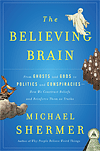 The Believing Brain
The Believing Brain
by Michael Shermer -
In this, his magnum opus synthesizing 30 years of research, Dr. Michael Shermer presents his comprehensive theory on how beliefs are born, formed, nourished, reinforced, challenged, changed, and extinguished. Essentially: beliefs come first, explanations for beliefs follow. We form our beliefs for a variety of subjective, personal, emotional, and psychological reasons in the context of environments created by family, friends, colleagues, culture, and society at large; after forming our beliefs we then defend, justify, and rationalize them with a host of intellectual reasons, cogent arguments, and rational explanations.
-
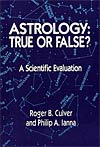 Astrology: True or False?
Astrology: True or False?
by Roger Culver and Philip Lanna
-
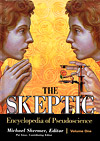 The Skeptic Encyclopedia of Pseudoscience
The Skeptic Encyclopedia of Pseudoscience
Michael Shermer, Pat Linse, Eds. -
Two volumes include and A–Z debunking of all things paranormal and pseudoscientific including case studies and in-depth analyses, a pro and con debate section, plus historical documents on many topics. This was published as a library reference book. Save over $50.00 off the price charged to libraries. GET THE SKEPTIC ENCYCLOPEDIA.
-
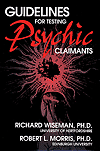 Guidelines for Testing Psychic Claimants
Guidelines for Testing Psychic Claimants
by Richard Wiseman and Robert L. Morris -
Palm readers, astrologers and those who claim they can talk to the dead make the rounds of national talkshows. Even police departments enlist the services of “psychic” detectives. But what proof do we have that any of these claims are real? Richard Wiseman and Robbert Morris provide helpful and professional guidelines to help health professionals, law enforcement agencies, cult investigators, scientists, and the public at large assess those who make psychic claims. GET THE BOOK.
-
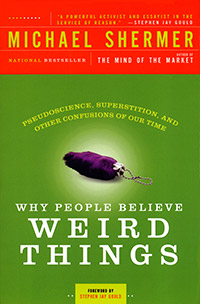 Why People Believe Weird Things
Why People Believe Weird Things
by Michael Shermer -
A no-holds-barred assault on popular superstitions and prejudices, this book debunks these nonsensical claims and explores the very human reasons people find otherworldly phenomena, conspiracy theories, and cults so appealing.
GET AN AUTOGRAPHED COPY OF THIS BOOK.

NEW ON SKEPTICBLOG.ORG
Rescuing People from Aliens
In this week’s Skepticblog, Daniel shares insights from Susan Clancy’s study of alien abductees, and asks what we can do to make skepticism a safe space for vulnerable people who need reliable information about paranormal topics.

OUR ANNUAL FUNDRAISING DRIVE IS ON NOW
Help Send Skepticism 101 into the World!
- Click here to read our new plan to take Skepticism to the next level!
- Click here to make a donation now via our online store.
Monthly Recurring Donation Options Now Available
We encourage you to choose the monthly recurring donation option. Simply tell us how long you want your donation to recur (using the drop-down menu on the donation page) and we’ll set up automatic withdrawal for the amount you select.
Just for considering a donation, check out our free PDF download
created by Junior Skeptic Editor Daniel Loxton.
12-01-18
In this week’s eSkeptic:
- Upcoming Lecture: Dr. Andy Thomson on Why We Believe in God(s)
- Follow Michael Shermer: Can burn patients be healed over the phone?
- Podcast Double Header: Skepticality and Monstertalk
- Feature article: A review of Soul Dust: The Magic of Consciousness
- Fundraising Drive on Now: Help Send Skepticism 101 into the World!
Upcoming Lecture at Caltech:
Dr. Andy Thomson

Why We Believe in God(s):
A Concise Guide to
the Science of Faith
with Dr. Andy Thomson
Sunday, February 12, 2012 at 2 pm
IN THIS LECTURE BASED ON HIS NEW BOOK, psychiatrist Andy Thomson examines the evolution, history, anthropology, sociology, and psychology of religious beliefs and provides a brief and accessible guide to the exciting new discoveries that allow us to finally understand why and how the human mind generates, accepts, and spreads religious faith and god beliefs. Dr. Thomson is a staff psychiatrist at the University of Virginia’s Student Health Center and the Institute of Law, Psychiatry and Public Policy, and maintains a private practice of adult and forensic psychiatry in Charlottesville, Virginia. He serves as a trustee of the Richard Dawkins Foundation for Reason and Science.
Tickets are first come, first served at the door. Seating is limited. $8 for Skeptics Society members and the JPL/Caltech community, $10 for nonmembers. Your admission fee is a donation that pays for our lecture expenses.

NEW ON SKEPTICBLOG.ORG
Can burn patients really be healed from a distance by phone?
In this week’s Skepticblog, Michael Shermer discusses Dr. Marja Pronk, a woman who claims she can heal burn patients from a distance by phone. Can such a claim be tested ethically? If so, what would such a study look like?

Skepticality
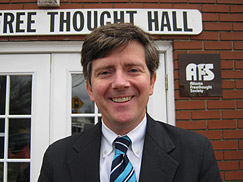
Interview with Sean Faircloth
This week on Skepticality, Swoopy pops in for a quick chat with Derek about what she has been doing, and has some fun, new ideas for the show. Derek interviews Sean Faircloth about his new role at the US branch of the Richard Dawkins Foundation For Reason and Science and about his new book, Attack of the Theocrats: How the Religious Right Harms Us All—and What We Can Do About It (with a Foreword by Richard Dawkins).
MonsterTalk
Something Wiccan
This Way Comes
In this episode of MonsterTalk, two skeptics interview a witch about how to battle evil with magic. Emily Carlin is a magical instructor at The Grey School—an online magical university and the author of Defense Against the Dark: A Field Guide to Protecting Yourself from Predatory Spirits, Energy Vampires and Malevolent Magic. Is magic the best defense against evil monsters? Or is skepticism? Pull up a chair and
sit a spell to find out.
A review of Soul Dust:
The Magic of Consciousness
In this week’s eSkeptic, Robert L. Martone reviews Nicholas Humphrey’s book Soul Dust: The Magic of Consciousness (University Press, 2011, ISBN: 978-0691138626). Martone is a research scientist and is the Neuroscience Therapeutic Area Lead for the Covance Biomarker Center of Excellence. He has extensive experience in neuropharmacology research, having led neuroscience drug discovery and technology teams through all phases of drug discovery from target identification through clinical trials with expertise in both small molecule and protein therapeutics. He also has several years of academic research experience in molecular neurobiology, with a focus on the molecular genetics of familial neuropathies, and CNS tumor biomarker development.
The Soul of Consciousness
a book review by Robert L. Martone
Consciousness is an enigmatic hallmark of human existence. With his book, Soul Dust: The Magic of Consciousness, psychologist Nicholas Humphrey takes an ambitious approach to the problems of consciousness with a scope that encompasses science, literature and philosophy.
Humphrey’s essential thesis is that consciousness is the key characteristic that differentiates humans from most if not all other living beings, and that consciousness must be the result of an evolutionary process driven by a positive selective pressure: consciousness confers a selective advantage that enhances the survival and success of conscious beings. Humphrey has three objectives; first, to define consciousness; second, to propose the means by which the neural circuitry required for consciousness could emerge from neural substrates present in non-conscious organisms; finally, to define the selective advantage that consciousness offers conscious beings.
Humphrey defines consciousness in terms of the familiar model of the “Cartesian Theater” wherein our experience of consciousness is merely an internal representation of the external world played out upon a mental stage. He postulates that consciousness emerged from the gradual internalization of stimulus-response circuits. In the most primitive state, these circuits consist of neuronal loops that direct responses at the site of stimulation, while in the more advanced state, both the sensory and motor systems are internalized in the brain, and the stimulus-response loop may be entirely internal to the organism. Here again, Humphrey treads familiar ground, with inspiration from Hofstadter’s “strange loops,”1 but he missed an opportunity to explore in this context “mirror neurons”—those motor neurons first described by Rizzolatti that are activated in the brain of an animal either when that animal performs an activity or when it observes that same activity performed by another animal.2
What, then, is the selective advantage that drives consciousness? Humphrey posits that consciousness evolved simply because humans enjoyed being conscious. This psychic or metaphysical benefit conferred upon conscious humans is derived not so much from adaptation to the physical world, according to Humphrey, as it is to a metaphysical niche that he calls the “Soul Niche.”
Perhaps one should not expect extraordinary scientific scholarship in a book that contains the word “soul” in the title and “magic” in the subtitle, but Humphrey appears to have ambitions to be taken seriously, or at least to be seen as a provocateur. When justifying his use of the term “soul,” he asks, “Should I really be using it so freely? Doesn’t the word “soul” carry too much baggage? Yes it does, and I should—I should because it does” (156). A certain narcissism creeps into his narrative at times as when, for example, he gushed with Oprahesque abandon, “For if you have a miracle at your very center, then miraculous you are (emphasis his, 138).” He supports his contention that consciousness provided positive selective pressure through human enjoyment of consciousness with life-affirming passages from Rupert Brooke, Gerald Manley Hopkins and even selections from The Sound of Music, but he is apparently less familiar with Nietzsche, Styron or Bukowski. Nor does the prevalence of depression (9.5% of the adult population in the U.S., 10% in the UK) dissuade him from his arguments, which are at times embarrassingly provincial. For example, he contemplates what he supposes would be the tedious world of being human without consciousness, noting, “We need to ask whether a dreary world is necessarily one in which an animal or a human would lead a less successful life. We need to establish what, if any, is the biological advantage of being awestruck” (120). This leads one to wonder whether he is completely unaware of how much of humanity—all of them quite conscious—live in such a dreary world, with very little to prompt awe, and with little hope for escape from the anguish of hunger and destitution?
Consciousness emerges with age, and the consciousness of an infant is very different from that of an adolescent, which in turn is removed from that of a middle-aged adult. Throughout human existence from the Paleolithic era through early modern times, life expectancy was around 30 years, and while humans are sexually mature in their teens, the human brain—the substrate of consciousness—continues to develop until the mid 20s. If consciousness were to have evolved, the aspects of consciousness that conferred positive selective pressure were likely those that are manifest in the teen years. Humphrey acknowledges this emergence, yet still fumbles with it in his arguments. For example, he cites childhood curiosity as exemplifying the enjoyment of consciousness: “Human children in the first three years of life are consumed by a desire to explore and experiment with objects” (123), yet later acknowledges that human babies lack the unified sense of self that underlies consciousness. Similarly, he describes the “presentism” of a baby enjoying a bath, but it is precisely that presentism—that lack of historical context and indifference to the future—that he compared to the reveries of a gnat or a jackdaw and that would characterize any pre-conscious organism, infants included. Differences between teens and older adults that manifest in, for example, lower risk aversion are left fully unexplored in this work.
It may well be that humans created a metaphysical niche of their own, however, success and failure in that niche may be far more consequential than Humphrey’s rather banal choice between enjoyment and dreariness. Humphrey stumbles upon it when he states that, “human beings’ fear of death must always have been highly visible to natural selection—and hence so must have been the consciousness that lies behind it” (96–97). Has this fear of death led to avoidance of war or of killing in human culture? Obviously not. Rather, it may be that consciousness, and the theory of mind that is part of it, is essential to protect humans from their fiercest competitors—other humans. It is in this murderously competitive realm with other people that internalization of stimulus-response loops becomes important by providing a level of secrecy regarding one’s own knowledge and intentions. Similarly, mirror neurons would offer a selective advantage by providing an internalization of another’s intentions.
Humphrey touches upon the historical context of consciousness, stating that, “during the Renaissance [attitudes] shifted from a sense of unconscious fusion with the world towards a state of conscious individuation” (141). Yet Renaissance humanism did not rouse a sleeping medieval Europe to consciousness. In fact, it is narcissism, that “state of detached self-absorption” (106) that is the true focus of Humphrey’s work rather than consciousness per se, and the reason that this work falls short in providing a compelling explanation of consciousness. ![]()
References
- Hofstadter, Douglas R. 2007. I Am a Strange Loop. New York: Basic Books.
- Rizzolatti, G, Sinigaglia, C. 2008. Mirrors in the Brain: How We Share our Actions and Emotions. Oxford University Press.
Skeptical perspectives on consciousness…
-
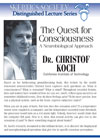 The Quest for Consciousness: A Neurobiological Approach
The Quest for Consciousness: A Neurobiological Approach
by Dr. Christof Koch -
Caltech neuroscientist, Dr. Koch asks: what are the biophysical and neurophysiological operations that give rise to specific conscious perceptions? How can the brain, a physical system, express subjective states such as emotions? How can neural activity give rise to sensations like pain? What is consciousness? Koch presents the best scientific answer to this question.
Don’t miss Christof Koch speaking at Caltech
on Sunday, May 13, 2012 at 2 pm!
-
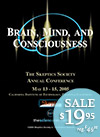 Brain, Mind, Consciousness. Conference 2005
Brain, Mind, Consciousness. Conference 2005
by multiple speakers
-
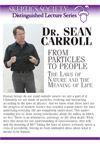 From Particles to People: The Laws of Nature and the Meaning of Life
From Particles to People: The Laws of Nature and the Meaning of Life
by Dr. Sean M. Carroll -
We are made of particles, evolving and interacting according to the laws of physics. And we know what those laws are—the progress of modern science has reached a point where the laws underlying everyday life are completely understood. This understanding lets us draw strong conclusions about the milieu in which we live. There is no telekinesis, astrology, or life after death. What does this mean for our understanding of consciousness, free will, and the meaning of life? Taking the laws of nature seriously opens a vista of possibility, freeing us from outmoded ideas about what it means to be human.
READ MORE AND ORDER THE DVD.

OUR ANNUAL FUNDRAISING DRIVE IS ON NOW
Help Send Skepticism 101 into the World!
- Click here to read our new plan to take Skepticism to the next level!
- Click here to make a donation now via our online store.
Monthly Recurring Donation Options Now Available
We encourage you to choose the monthly recurring donation option. Simply tell us how long you want your donation to recur (using the drop-down menu on the donation page) and we’ll set up automatic withdrawal for the amount you select.
Just for considering a donation, check out our free PDF download
created by Junior Skeptic Editor Daniel Loxton.
As pessoas gostam de ser enganadas
This interview with Michael Shermer appeared in the magazine ÉPOCA in January 2012. The following is in Portuguese. There is also an English translation.
O psicólogo e escritor americano diz que é mais fácil acreditar em esquisitices — como mediunidade, horóscopo e discos voadores – que pensar e questionar
A DIFERENÇA ENTRE UM MÁGICO E UM MÉDIUM É QUE O MÁGICO CONFESSA FAZER TRUQUES, enquanto o paranormal afirma ter poderes que o habilitam a ler pensamentos, prever o futuro ou falar com os mortos. “basta ao médium dizer que tem poderes para as pessoas crerem. Faz parte da natureza humana”, afirma o psicólogo e escritor americano Michael Shermer, de 57 anos, diretor da Sociedade Cética e da revista Skeptic. “Não evoluímos para duvidar ou ter visão crítica. Isso exige educação e reflexão. Crer é mais fácil.” Nesta entrevista, ele fala sobre os temas de seu livro Por que as pessoas acreditam em coisas estranhas (JSN, 384 páginas, R$ 65, publicado agora no Brasil), e ataca a farsa por trás da crença em discos voadores, bruxas, quiromancia e mediunidade. CONTINUE READING THIS POST…
12-01-11
In this week’s eSkeptic:
A DEBATE BETWEEN
Christopher Hitchens & Kenneth Miller on:
“Does Science Make Belief in God Obsolete?”
In last week’s eSkeptic, we presented Christopher Hitchens’ answer to the question “Does Science Make Belief in God Obsolete?” This week, we present the same question in the form of a debate between Christopher Hitchens and Kenneth Miller. Hitchens (self-proclaimed anti-theist and author of God Is Not Great) and Kenneth Miller (a pro-evolution Christian and author of Finding Darwin’s God) are worlds apart both by profession and belief, and yet both have brilliant minds for dissecting arguments both scientific and philosophical. First, Hitchens comments on Miller’s essay, followed by Miller’s response, and then the remaining dialogue between the two. This debate was edited by Michael Shermer for the Templeton Foundation’s Big Question Essay Series.
A debate between
Christopher Hitchens & Kenneth Miller
edited by Michael Shermer

Christopher Hitchens (1949–2011). Photo by Christian Witkin.
Christopher Hitchens: I am not scientifically certified in any field, but when I read a “creationist” account of an Eden-based evolutionary fairy-story, I consider myself sufficiently qualified to understand and to refute the mental process by which it is argued. On the other hand, I do possess some small qualifications in the world of language and its relationship to cognition and I have to confess that I simply cannot make sense of a single one of your most important assertions or (perhaps I should better say) avowals.
What does it mean to say, “The Deity they reject so easily is not the one I know”? If you have such an extraordinary acquaintanceship, or source of information, is it only humility that keeps you confined in the small compass of Rhode Island? You go on to state that a rather intriguing and immense question (why is the world “bursting” with so much bio-diversity?) has in fact a rather obvious answer. You write: “To a person of faith, the answer to that question is God.”
Well, I hope I may be excused if I state that I already knew about the things that faith can apparently cause people—without a rag of evidence—to believe. But is this same reply also the answer to the question: “why have 99.9 per cent of all known species on our planet become extinct?” If so, then god—I don’t capitalize my concepts—explains everything and nothing with equal ease.
This same tenacious addiction to tautology and non-sequitur must be the explanation for the latter part of your essay, in which you accuse atheists of trying to make god “an ordinary part of the natural world” (no we don’t: the pantheists and the Paleyites do that). You make the circular assertion that god is “the reason for nature, the explanation for why things are” and the incoherent proposal that “He is the answer to existence, not part of existence itself.” I have heard Zen koans uttered with more articulation. It would be unkind to ask you how you proceed from such deistic assumptions to your theistic ones—the Resurrection, for example. Why do you believe in such things? Do you believe that you have a superior access to the numinous, and because such beliefs—in common with all other superstitions—are not subject to direct disproof or falsifiability? If so, you will, by the same token, have to accept my deeply-held belief that such opinions are the moral and verbal equivalent of white noise.
Before any further damage to the good name of science is done, let me point out that it is perfectly absurd to say that there is a “scientific faith” which assumes that all matters are reducible to the immediately comprehensible. I would briefly cite J.B.S. Haldane’s observation that the universe is not just queerer than we imagine, but queerer than we can imagine. I might add Einstein’s remark that the miracle is that there are no miracles: that the natural order is in fact harmonious and not to be interrupted by capricious supernatural interventions. If that doesn’t take care of deism, it takes care of theism—and it’s religion we are talking about in this debate. Professor Miller, you appear to me to fail the elementary test of being able to say what your opponents are talking about. But then, by your absurd use of the term “validate” in the closing sentence of your essay, you would seem to have no idea what you yourself are talking about, either.
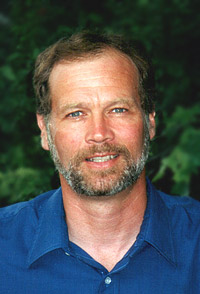
Kenneth Miller
Kenneth Miller: I must confess that I was surprised by the tone and the content of your writing, and especially by your eagerness to move the discussion away from science. You invoked history, writing that revelation came at the wrong time and to the wrong people. Apparently a proper God would have avoided “gaping peasants,” and delivered his message instead to high table at Oxford. You deliberately misread my reference to personal belief as a claim of special revelation, and even found time to ridicule a tiny American state—ironically, the very one which first gave birth to the concept of religious freedom. Why such departures from the issue at hand?
Perhaps it is because you sense the inherent weakness of your argument. Your essay cited three scientific points, which, you were confident, would have kept us from “adopting monotheism.” Ironically, in essence these were: 1) our species had a beginning, 2) the universe had a beginning, and 3) our existence will come to an end. Last time I looked, each of these was actually a teaching of the great monotheistic faiths. So much for the profound contradiction you sought.
You tip your hand when invoking extinction as a problem for faith, having fixed your arrow on nothing more sophisticated than an “Eden-based evolutionary fairy-story.” You declare yourself, just as young-earth creationists do, unable to stretch the cloth of Genesis around the Big Bang, mass extinction, and human evolution. But scripture reflects the flawed cosmology of its age, just as one might imprint today’s imperfect and incomplete science on the specifics of either your disbelief or my faith. Finding that old conceptions of nature are wrong, just as many of today’s theories surely are, does not even begin to invalidate the religious message that we live in a universe reflecting the will and rationality of a creator. You say that the natural order is harmonious. I agree. At issue is the source of that harmony.
You say that the grand sweep of the cosmos makes “pathetic nonsense” of the notion that human existence is part of a plan, but on what scientific basis do you make that judgment? In reality, the potential for human existence is woven into every fiber of that universe, from the starry furnaces that forged the carbon upon which life is based, to the chemical bonds that fashioned our DNA from the muck and dust of this rocky planet. Seems like a plan to me.
I was particularly impressed—but not in a good way—by your misuse of Einstein. In saying that there are “no miracles,” he was not ruling out the divine, but speaking to the scientific comprehensibility of nature. Einstein also said there are two ways to live: as though nothing is a miracle, or as though everything is. I choose the latter, and clearly, so did he. Finally, you say that I am an “opponent” who simply does not know what you are talking about. Mr. Hitchens, I regard you as a friend, not an opponent, and would suggest that the real problem is I understand what you are talking about all too well.
Hitchens: To take these points in reverse order: Albert Einstein took a Spinozist worldview that excluded the idea of a personal god or a deity that intervened in human affairs. The natural order does not respond to prayer or propitiation: it maintains its extraordinary regularity. This may not rule out a certain non-specific deism or pantheism, but it does make nonsense of the idea of a god to which human beings can address themselves.
The argument from design has seldom been stated more sloppily than in the “grand sweep” paragraph that (in ascending order) undergirds this misreading of Einstein. Pray tell, is it all designed, or just the apparently harmonious bits? The impending collision between our galaxy and Andromeda: part of the plan or not? A series of lifeless failed planets in our own solar suburb: good design or random coincidence? As with every other such invocation, the fans of the designer must convict him either of a good deal of waste and fumbling or a great deal of cruelty and indifference, or both.
It is cheap to compare me to a young-earth creationist just because I suggest that one must choose between “scripture” and science. The former does indeed reflect “the flawed cosmology of its age,” but that is precisely because it is a work of man and not a work of a deity. Which was my original point.
I cannot see how this insistence on an apparently designed harmony can be squared with your original assertion that god is “the answer to existence, not part of existence itself” or with your scorn for the idea that god is “an ordinary part of the natural world.” Is he or isn’t he the key to the natural order, or at any rate a dynamic element in it? I can understand you avoiding my question about resurrection, but if you want to stay focused on science then you can’t have this both ways.
It’s good of monotheists to accept that things have beginnings and ends. (“By god, sir,” as Samuel Johnson said in a slightly different connection, “they had better”.) I suppose one difference here is the eschatological one, or the way in which religion looks forward to the end. That important distinction to one side, the materialist view is simply that science can provide us, and indeed has provided us, with explanations for the origin and the terminus, of our cosmos and our species, that require no supernatural element. If this is not a scientific refutation of faith (which it isn’t, since faith isn’t susceptible to such procedures) it makes faith and science look increasingly hard to reconcile.
I was ridiculing you and not Rhode Island, as any careful reader will see. And yes, I do think that the Archangel Gabriel and the Virgin Mary and other apparitions ought at least once in human history to have shown themselves to people who were able to read and write, who were not terrified of demons and ghosts, and who possessed the ability to test evidence in the crucible of experiment. It hasn’t happened yet and I predict that it isn’t going to happen, either. Nonetheless, the witchdoctors and shamans can always count on the credulity of second-and-third-hand witnesses, descending to tenth-and-twentieth hand, some of whom will sadly claim to base their beliefs on scientific method.
Miller: You know, Christopher, I think we’re making progress. In your invocations of Einstein and Spinoza there is a grudging, if indirect, deference to the argument in my original essay—specifically, that faith “includes science, but then seeks the ultimate reason why the logic of science should work so well.” In each of your contributions to this dialogue, you’ve dismissed this as implying nothing more than deism, as if that alone was sufficient to refute it. As you well know, it is not.
Classic deism involves a God who is creator and prime mover, yet uninvolved in the affairs of his universe. But apply some logic here. By what principle would a God, capable of creating such vastness, be constrained from intervening in its affairs? Clearly, that restraint could only come by choice, and given such power, it would have to be a willing choice. The distinction between theism and deism, therefore, is really a claim about the personality of God, and the nature of his actions (or lack of same) in our created world. Earlier, I wrote that the atheist places God within the realm of science to investigate and test. The arguments you raise against scripture and reports of the miraculous take this form exactly, and that is also why they fall short—because they consider God to be a part of nature rather than nature’s cause. I do wonder what sort of God would meet your tests for clarity of teaching and evidence of existence, and I would love to hear your answer.
I accept that your first response was an attempt at personal ridicule. However, I wonder why you resort to such tactics if the logic of your case is so compelling. You note sarcastically that it is “good of monotheists to accept that things have beginnings and ends.” Can you possibly be serious, when Abrahamic monotheism has always spoken of ends and beginnings? As you acknowledge, science has indeed given explanations for “our cosmos and our species that require no supernatural element.” On that point you and I agree. But this means only that science has now confirmed nature’s sufficiency to fulfill the promised work of its creator.
You ask if all is designed, including galactic collisions, “failed planets,” and the extravagant waste of nature. Yet by what rubric do you know the “purpose” of galaxies and planets, in order to pronounce them “failed?” There is waste and death in nature and the cosmos, but there is something else as well. Amid the material from which you draw the bleak conclusion of purposeless chaos, there are the very laws and elements that make evolution (and humanity) possible. A great biologist, whom we both admire, once wrote that there was “grandeur in this view of life,” and science has done nothing since to set that judgment aside. A world of “endless forms, most beautiful and most wonderful” is the one in which we find ourselves, and I believe there is a reason for that.
Hitchens: That there might have been a “mind” at the beginning of the cosmos does not in the least entail that there still is one, or that its abstention from intervention in human affairs is conscious. (If the mind took the form of an intelligent and self-conscious “god”, as Lucretius pointed out, it would obviously wish to stay out of our petty quarrels and strivings.) And this mind would also need to have been created or inspired by still another mind, as in turn would that mind. No wonder that Christians prefer to start speaking about “mysteries” at this point.
Incidentally, are you a Christian? I have no idea which religion you do or do not believe in. Do you think that this eternal mind waited until two thousand years ago, then donated a son for a human sacrifice and thus enabled us to purge ourselves from sin? Or do you prefer to think that Mohammed is god’s messenger, or that the eternal mind has made a covenant with one special tribe? With atheists, it is always possible for our opponents to know and understand (if they choose to) what we believe (or do not believe). With religious people it is possible to spend a long time in discussion without ever discovering precisely what role they believe the supernatural to play in our lives. And no two claims are ever quite the same—further proof that the whole religious enterprise is improvised by primates.
To answer your challenge: if I had faith I would not presume to act or think as if god owed me an explanation. Surely that is the point of faith to begin with: to fill the unbridgeable void between evidence and the entire lack of it. That’s why I consider it the most over-rated of the virtues.
Miller: As we conclude, I am struck by your careful avoidance of our question—whether science makes belief in God obsolete. Instead you puzzle over my religion (I’m a Catholic) and invoke the old standbys: scripture is unreliable, faiths contradict, miracles are delusional fabrications, and God’s reported interventions in human affairs make no sense (to you). You dismiss a “mind” as first cause by invoking an infinite regression of minds—ironically unaware that your own view requires exactly that—an infinite regression of natural causes. A theist sees the logical problem here, but apparently you do not.
You avoided my direct question (to you, a “challenge”) of what might convince you of God’s reality. You wrote, in effect, that no evidence would do—a very fair summary of your views on this issue, I admit.
In the end you have no answer to why science works, why the physical logic of natural law makes life possible, or why the human mind is able to explore and understand nature. And I agree that there is no scientific answer to such questions. That is precisely the point of faith—to order and rationalize our encounters with the world around us. Faith is human, and therefore imperfect. But faith expresses, however poorly, a reality that includes the scientific experience in every sense, and therefore has become more relevant than ever in our scientific age. ![]()
Skeptical perspective on the Big Questions…
-
 Origins & The Big Questions
Origins & The Big Questions
Conference 2008 (5 Part Set)
with Donald Prothero, Leonard Susskind, Paul Davies, Sean Carroll, Christof Koch, Kenneth miller, Nancey Murphy, & Michael Shermer -
Today, there is arguably no hotter topic in culture than science and religion, and so much of the debate turns on the “Big Questions” that involve “origins ”: the origin of the universe, the origin of the “fine-tuned” laws of nature, the origin of time and time’s arrow, the origin of life and complex life, and the origin of brains, minds, and consciousness. Now, science is making significant headway into providing natural explanations for these ultimate questions, which leaves us with the biggest question of all: “Does science make belief in God obsolete?” we have assembled some of the world’s greatest minds to discuss some of the world’s greatest questions. In 2008, the Skeptics Society held a conference wherein we assembled some of the world’s greatest minds to discuss some of the world’s greatest questions…
READ more about this conference and order the 5-part DVD set.
OR, order single DVDs: part 1 | part 2 | part 3 | part 4 | part 5
-
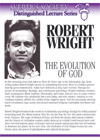 The Evolution of God
The Evolution of God
by Robert Wright -
From the Stone Age to the Information Age, Robert Wright unveils an astonishing discovery: there is a hidden pattern that the great monotheistic faiths have followed as they have evolved. Through the prisms of archaeology, theology, and evolutionary psychology, Wright’s findings overturn basic assumptions about Judaism, Christianity, and Islam, and are sure to cause controversy. He explains why spirituality has a role today, and why science, contrary to conventional wisdom, affirms the validity of the religious quest. And this previously unrecognized evolutionary logic points not toward continued religious extremism, but future harmony. READ more and order the DVD.
-
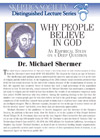 Why People Believe in God
Why People Believe in God
by Michael Shermer -
Shermer presents data from an empirical study of 10,000 Americans — why do people believe in God? Why is belief in God increasing, not decreasing as predicted? How the fact that we live in an age of science influences the reason people give for their faith. How people assume others believe in God for different reasons than they do. The psychology of rationalizing beliefs arrived at for non-rational reasons.
READ more and order the DVD.
Other Books & Lectures on Evolution & Creationism
Our online store has a wide selection of books and lectures (at Caltech) on the topics of evolution and creationism.


Tim Farley illustration by Neil Davies. Card design by Crispian Jago.
2011: A Year in Review
with Tim Farley
SKEPTICALITY EPISODE 173
This week on Skepticality, host Derek sits down with Tim Farley to reflect on what happened in the skeptical world over the course of 2011 and ponder what is in store for 2012. Tim Farley is the creator of the website Whats the Harm (a catalog of actual cases of people suffering physical, medical, financial or other harm because of their beliefs in concepts not supported by science) and Skeptic History (a collection of historical dates of interest to skeptics).

OUR ANNUAL FUNDRAISING DRIVE IS ON NOW
Help Send Skepticism 101 into the World!
- Click here to read our new plan to take Skepticism to the next level!
- Click here to make a donation now via our online store.
Monthly Recurring Donation Options Now Available
We encourage you to choose the monthly recurring donation option. Simply tell us how long you want your donation to recur (using the drop-down menu on the donation page) and we’ll set up automatic withdrawal for the amount you select.
Just for considering a donation, check out our free PDF download
created by Junior Skeptic Editor Daniel Loxton.
12-01-04
In this week’s eSkeptic:
- Junior Detectives Club : Free Skeptics Mix Tape “Bonus Track”
- Lectures at Caltech: Announcing Our Spring 2012 Lectures
- Follow Michael Shermer: God, Guns, and Artificial Intelligence
- Feature article: CHRISTOPHER HITCHENS on:
“Does Science Make Belief in God Obsolete?” - Fundraising Drive on Now: Skepticism 101 available to the world!
Junior Detectives Club —
Free Skeptics Mix Tape “Bonus Track”
TO START 2012 OFF RIGHT, we’re pleased to share a small gift from Junior Skeptic: the upbeat and apt song, “Junior Detectives Club” from science-themed children’s musician Monty Harper. We’ve added “Junior Detectives Club” as a bonus track for the the kid-friendly Skeptics Mix Tape 2009 project.
Harper recorded this song in 2007 for the Collaborative Summer Library Program (a reading program shared by many states) and for his album Get a Clue. “I wanted it to sound like a real club, singing a song to open their meeting,” Harper told eSkeptic. To achieve that sound, he enlisted the help of Oklahoma music teacher Rana McCoy and her children’s voice group, The Center Stage Singers.
The result is a light-hearted skeptical manifesto for kids, performed by kids—and it’s yours to enjoy.
Monty Harper writes award-winning children’s songs about science, reading, and creativity. His audiences laugh, clap, sing, wiggle, shout, roar, giggle, jump, hoot, pop, snap, and most of all… think! To learn more about Monty Harper visit his website, or check out his latest album, Songs From the Science Frontier, on iTunes.
Announcing the Spring 2012 Season
of Our Distinguished Lectures at Caltech
MARK YOUR CALENDAR! The Skeptics Society is pleased to announce another season of our Distinguished Lecture Series at Caltech.
All lectures are in Baxter Lecture Hall on a Sunday at 2 pm with the exception of the Monday, March 19 lecture which will be held at 7:30 pm and the Sunday, March 25 debate which will be held in Beckman Auditorium at 2 pm. All events include an author book signing. First up…
- Why We Believe in God(s): A Concise Guide to the Science of Faith
with Dr. Andy Thomson
Sunday February 12, 2012 at 2 pm - Abundance: Why the Future Will Be Much Better Than You Think
with Dr. Peter Diamandis
Saunday, February 26, 2012 at 2 pm - The Creative Destruction of Medicine: How the Digital Revolution
Will Create Better Health Care
with Dr. Eric Topol
Sunday, March 11, 2012 at 2 pm - Revelations: Visions, Prophecy, & Politics in the Book of Revelation
with Dr. Elaine Pagels
Monday, March 19, 2012 at 7:30 pm - The Great Debate: “Has Science Refuted Religion?”
Sean Carroll & Michael Shermer v. Dinesh D’Souza & Ian Hutchinson
Beckman Auditorium
Sunday, March 25, 2012 at 2 pm - Born Believers: The Science of Children’s Religious Belief
with Dr. Justin Barrett
Sunday, April 15, 2012 at 2 pm - Subliminal: How Your Unconscious Mind Rules Your Behavior
with Dr. Leonard Mlodinow
Sunday, April 29, 2012 at 2 pm - Consciousness: Confessions of a Romantic Reductionist
with Dr. Christof Koch
Sunday, May 13, 2012 at 2 pm - The Secrets of Mental Math: The Mathemagician’s Guide
to Lightning Calculation and Amazing Math Tricks
with Dr. Art Benjamin
Sunday, June 10, 2012 at 2 pm

NEW ON MICHAELSHERMER.COM
In the Year 9595
We have all heard about Watson, the computer that beat the two best champions on Jeopardy. But, how close are we to having computers emulate human though, become self-aware and take over the world? In this, the January Skeptic column for Scientific American, Michael Shermer ponders the question of artificial intelligence.
NEW ON SKEPTICBLOG.ORG
More God Less Crime, or More Guns Less Crime
During the last week of 2011, Michael Shermer spoke at and attended a salon in Santa Fe, New Mexico at which two of the speakers addressed the topic of the decline of crime, one (Byron Johnson) attributing it to god and the other (John Lott) to guns. In this week’s Skepticblog, Michael Shermer reports on their findings…
Christopher Hitchens on:
“Does Science Make Belief in God Obsolete?”
That was the Templeton Foundation’s Big Question in the third of a series of questions posed to leading scientist and scholars, among them: Steven Pinker, Victor Stenger, Mary Midgley, William D. Phillips, Christoph Cardinal Schönborn and Michael Shermer. In this week’s eSkeptic, we present Christopher Hitchens’ answer. Christopher Hitchens is the author of God Is Not Great. Hitchens died on December 15, 2011 at the age of 62. In tribute to Hitchens, we present this article which was edited by Michael Shermer for the Templeton Foundation’s Big Question Series. Tune in next week for a debate between Hitchens and Kenneth Miller (also part of the Big Questions Series).
No, But it Should
by Christopher Hitchens
Does science make belief in god obsolete? No, but it should. Until about 1832, when it first seems to have become established as a noun and a concept, the term “scientist” had no really independent meaning. “Science” meant “knowledge” in much the same way as “physic” meant medicine, and those who conducted experiments or organized field expeditions or managed laboratories were known as “natural philosophers.” To these gentlemen (for they were mainly gentlemen) the belief in a divine presence or inspiration was often merely assumed to be a part of the natural order, in rather the same way as it was assumed—or actually insisted upon—that a teacher at Cambridge University swear an oath to be an ordained Christian minister. For Sir Isaac Newton—an enthusiastic alchemist, a despiser of the doctrine of the Trinity and a fanatical anti-Papist—the main clues to the cosmos were to be found in Scripture. Joseph Priestley, discoverer of oxygen, was a devout Unitarian as well as a believer in the phlogiston theory. Alfred Russel Wallace, to whom we owe much of what we know about biogeography and natural selection, delighted in nothing more than a session of ectoplasmic or spiritual communion with the departed.
And thus it could be argued—though if I were a believer in god I would not myself attempt to argue it—that a commitment to science by no means contradicts a belief in the supernatural. The best known statement of this opinion in our own time comes from the late Stephen Jay Gould, who tactfully proposed that the worlds of science and religion commanded “non-overlapping magisteria.” How true is this on a second look, or even on a first glance? Would we have adopted monotheism in the first place if we had known:
- That our species is at most 200,000 years old, and very nearly joined the 98.9 percent of all other species on our planet by becoming extinct, in Africa, 60,000 years ago, when our numbers seemingly fell below 2,000 before we embarked on our true “exodus” from the savannah?
- That the universe, originally discovered by Edwin Hubble to be expanding away from itself in a flash of red light, is now known to be expanding away from itself even more rapidly, so that soon even the evidence of the original “big bang” will be unobservable?
- That the Andromeda galaxy is on a direct collision course with our own, the ominous but beautiful premonition of which can already be seen with a naked eye in the night sky?
These are very recent examples, post-Darwinian and post-Einsteinian, and they make pathetic nonsense of any idea that our presence on this planet, let alone in this of so many billion galaxies, is part of a plan. Which design, or designer, made so sure that absolutely nothing (see above) will come out of our fragile current “something”? What plan, or planner, determined that millions of humans would die without even a grave-marker, for our first 200,000 years of struggling and desperate existence, and that there would only then at last be a “revelation” to save us, about 3,000 years ago, but disclosed only to gaping peasants in remote and violent and illiterate areas of the Middle East?
To say that there is little “scientific” evidence for the last proposition is to invite a laugh. There is no evidence for it, period. And if by some strenuous and improbable revelation there was to be any evidence, it would only argue that the creator or designer of all things was either (a) very laborious, roundabout, tinkering and incompetent and/or (b) extremely capricious and callous, and even cruel. It will not do to say, in reply to this, that the lord moves in mysterious ways. Those who dare to claim to be his understudies and votaries and interpreters must either accept the cruelty and the chaos or disown it: they cannot pick and choose between the warmly benign and the frigidly indifferent. Nor can the religious claim to be in possession of secret sources of information that are denied to the rest of us. That claim was, once, the prerogative of the Pope and the witch-doctor, but now it’s gone. This is as much as to say that reason and logic reject god, which (without being conclusive) would be a fairly close approach to a scientific rebuttal. It would also be quite near to saying something that lies just outside the scope of this essay, which is that morality shudders at the idea of god, as well.
Religion, remember, is theism not deism. Faith cannot rest itself on the argument that there might or might not be a prime mover. Faith must believe in answered prayers, divinely-ordained morality, heavenly warrant for circumcision, the occurrence of miracles or what you will. Physics and chemistry and biology and palaeontology and archaeology have, at a minimum, given us explanations for what used to be mysterious, and furnished us with hypotheses that are at least as good as, or very much better than, the ones offered by any believers in other and inexplicable dimensions.
Does this mean that the inexplicable or superstitious has become “obsolete”? I myself would wish to say no, if only because I believe that the human capacity for wonder neither will nor should be destroyed or superseded. But the original problem with religion is that it is our first, and our worst, attempt at explanation. It is how we came up with answers before we had any evidence. It belongs to the terrified childhood of our species, before we knew about germs or could account for earthquakes. It belongs to our childhood, too, in the less charming sense of demanding a tyrannical authority: a protective parent who demands compulsory love even as he exacts a tithe of fear. This unalterable and eternal despot is the origin of totalitarianism, and represents the first cringing human attempt to refer all difficult questions to the smoking and forbidding altar of a Big Brother. This of course is why one desires that science and humanism would make faith obsolete, even as one sadly realizes that as long as we remain insecure primates we shall remain very fearful of breaking the chain. ![]()
Skeptical perspective on faith and spirituality…
-
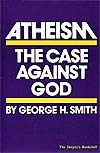 Atheism: The Case Against God
Atheism: The Case Against God
by George Smith
-
 The Soul of Science
The Soul of Science
by Michael Shermer -
Can we find spiritual meaning and purpose in a scientific worldview? Yes! There are many sources of spirituality; religion may be the most common, but it is by no means the only. Anything that generates a sense of awe may be a source of spirituality. Science does this in spades. READ more and order the book.
-
 Living Without Religion
Living Without Religion
by Paul Kurtz -
One of America’s foremost expositors of humanist philosophy, Paul Kurtz shows how we can live the good life filled with morality, commitment, and dedication, without having to depend on the existence of a higher being. Drawing upon the disciplines of the sciences, philosophy, and ethics, Kurtz also offers concrete recommendations for the development of the humanism of the future. READ more and order the book.

OUR ANNUAL FUNDRAISING DRIVE IS ON NOW
We need your support!
- Click here to read our new plan to take Skepticism to the next level!
- Click here to make a donation now via our online store.
Monthly Recurring Donation Options Now Available
We encourage you to choose the monthly recurring donation option. Simply tell us how long you want your donation to recur (using the drop-down menu on the donation page) and we’ll set up automatic withdrawal for the amount you select.
Just for considering a donation, check out our free PDF download
created by Junior Skeptic Editor Daniel Loxton.
11-12-28
In this week’s eSkeptic:

OUR ANNUAL FUNDRAISING DRIVE IS ON NOW
We need your support!
- Click here to read our new plan to take Skepticism to the next level!
- Click here to make a donation now via our online store.
Just for considering a donation, check out our free PDF download
created by Junior Skeptic Editor Daniel Loxton.
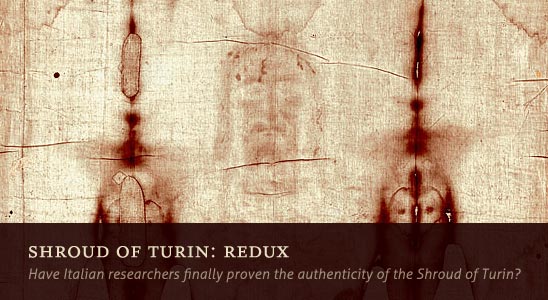
About this week’s eSkeptic
Recently, global headlines have resurrected the decades-old case of the Shroud of Turin in response to a group of Italian researchers who have studied its authenticity and claim that the image it bears (ostensibly of Jesus) was not faked. Though the case for fraud has indeed been strong since the 14th century, skeptics know all too well that some topics just never seem to get laid to rest. In this week’s eSkeptic, Daniel Loxton responds to the media hype.
Shroud of Turin: Redux
by Daniel Loxton
Skeptics sometimes express impatience with discussion of seemingly quaint paranormal claims. (“What, Bigfoot—again?”) But the great lesson of paranormal history is that it is a wheel: no matter how passé or fringe a claim may sound, it is almost guaranteed to come ‘round again, in the same form or in some novel mutation.
In the last few days, global headlines have resurrected a nostalgic case from my childhood, just in time for Christmas: “The Shroud of Turin Wasn’t Faked, Italian Experts Say.” The cutting edge of yesterday—today! Even in my youth, this mystery was centuries old.
The Shroud of Turin is a 14-foot length of linen cloth that bears a stylized picture of a bearded man. Legend holds the Shroud to be a burial cloth wrapped around the Biblical Jesus following his execution. This linen was allegedly flash-imprinted with an image of Jesus during his miraculous resurrection, presumably by an intense burst of energy released under such circumstances.
The case for fraud has been strong since the 14th century, but enthusiasts insist on rolling that wheel ‘round again. According to news reports this week, Italian scientists used an infrared CO2 laser to scorch images onto cloth and ”conducted dozens of hours of tests with X-rays and ultraviolet lights” in an effort to prove that the image could be created by a burst of electromagnetic energy. (Here’s a PDF of their Italian-language report.) What is the wavelength of a resurrection miracle? If there is one, the scientists were unable to discover what it might be. They learned (in ABC News’s paraphrase) that “no laser existed to date that could replicate the singular nature of markings on the shroud.”

Full-length photograph of the Shroud of Turin which is said to have been the cloth placed on Jesus at the time of his burial. (Public domain image from Wikimedia Commons.)
All this business with lasers is neither here nor there. I’m reminded of magician James Randi’s line from Flim-Flam! about the pseudoscience technique of the Provocative Fact.
The same technique was used by the Gellerites when they assured us that at no time did Uri Geller use laser beams, magnets, or chemicals to bend spoons. This was quite true. It is also quite true that he had no eggbeaters, asbestos insulation, or powdered aspirin in his pockets either. So what?1
Turns out it’s hard to make a Shroud copy using lasers. That’s hardly surprising, but neither is it relevant. There was never a good reason to think the Shroud was created by anything but the tools and artistry of a painter. Failed attempts to replicate the Shroud image using lasers only underline the argument skeptics have made for decades: the object is a medieval fake.
The bottom line on the Shroud remains the same: the Shroud continues to fail several key practical tests, as discussed by skeptical investigator Joe Nickell in his classic work on the subject, Looking for a Miracle:2
- Provenance: there is no sign that this object existed before the 14th century;
- Art history: the Shroud fits into art history as part of a genre of artistic depictions and recreations of burial cloths of Christ;
- Style: the image upon the shroud looks like a manufactured illustration consistent with 14th century religious iconography, not like a real human being;
- Circumstance: a 14th century Catholic bishop determined that the Shroud was a “cunningly painted” fraud—and discovered the artist who confessed to creating it;
- Chemistry: the Shroud contains red ochre and other paint pigments;
- Radiometric dating: carbon-14 dating tests showed in 1988 that the Shroud was likely created between 1260 and 1390 CE. In 2008, the hypothesis that this date was distorted by carbon monoxide contamination was tested—and results of the original tests confirmed.
Overturning the robustly supported conclusion that the Shroud was manufactured by a medieval artist would take extraordinary levels of evidence in favor of some alternate explanation. The current media hype carries no such breakthrough news. The opposite is true, in fact: the Italian researchers concede (as quoted by Vatican Insider) that their “inability to repeat (and therefore falsify) the image on the Shroud makes it impossible to formulate a reliable hypothesis on how the impression was made.”
After decades of controversy, the real shame is not merely the miasma of pseudoscience surrounding the relic (that’s a fog skeptics are happy enough to cut through) but the blurring of the lines between science and metaphysics—or if you like, between science and faith. The Shroud’s popularity seems to stem from the hope that it could deliver tangible evidence for the divine, but that hope is misplaced. Even if Shroud researchers were to prove their (exceptionally unlikely) speculation that the Shroud image was imprinted by “a short and intense burst of VUV directional radiation,” this would in no way confirm the existence of God, only of a unique printing process—a process enthusiasts have thus far been unable to demonstrate. The truth is that the tools and methods of empirical science would remain powerless to confirm the existence of a transcendent metaphysical God even in the event that such a being existed. It’s just not the sort of question science can answer.
Pressing science into the service of metaphysics may do harm to religion—I’ll leave it to the religious to say if that is so—but it cuts out the heart of the scientific enterprise. And that is a Christmas present that none of us should want.![]()
References
- Randi, James. Flim-Flam! (Prometheus Books: Amherst, New York, 1982.) p. 129
- Nickell, Joe. Looking for a Miracle. (Prometheus Books: Amherst, New York, 1998.) pp. 22–29
Skeptical must-haves for your library…
-
 Flim Flam! Psychics, ESP, Unicorns
Flim Flam! Psychics, ESP, Unicorns
and other Delusions
by James Randi
-
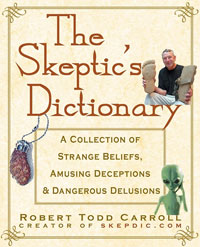 The Skeptic’s Dictionary
The Skeptic’s Dictionary
by Robert Carroll
-
 Why People Believe Weird Things: Pseudoscience, Superstition, and Other Confusions of Our Time
Why People Believe Weird Things: Pseudoscience, Superstition, and Other Confusions of Our Time
by Michael Shermer -
In this age of supposed scientific enlightenment, many people still believe in mind reading, past-life regression theory, New Age hokum, and alien abduction. A no-holds-barred assault on popular superstitions and prejudices, Why People Believe Weird Things debunks these nonsensical claims and explores the very human reasons people find otherworldly phenomena, conspiracy theories, and cults so appealing… READ more and order the book.
Viva Mojave!
Only 3 spots left for Viva Mojave!
JOIN THE SKEPTICS SOCIETY FOR A WONDERFUL THREE-DAY TOUR of the highlights of the Mojave Desert and the Las Vegas area. We will stop at the historic restored ghost town of Calico and take several tours, visit Afton Gorge where Ice Age floods drained Lake Manix, collect 550 million year old trilobites, experience the spectacular boulders of Red Rock Canyon, and conclude with a guided tour of Hoover Dam.
Click an image to enlarge it.
What’s Included?
Tour price includes charter bus, all hotel accommodations, breakfast and lunch each day, guided tour narration and guidebook, all other admission fees, and a tax-deductible contribution to the Skeptics Society of $130. Seats are limited to about 50 people on a single tour bus, so the tour should fill up fast.
Questions?
Email us or call 1-626-794-3119 with a credit card to secure your spot.
5 Free Junior Skeptic Cryptid Cards
Download and print 5 Cryptid Cards created by Junior Skeptic Editor Daniel Loxton. Creatures include: The Yeti, Griffin, Sasquatch/Bigfoot, Loch Ness Monster, and the Cadborosaurus. CONTINUE READING THIS POST…
TAGS: cryptozoology, free download11-12-21

It is Time Again to Support
Your Skeptics Society!
THE SKEPTICS SOCIETY is a non-profit, member-supported 501(c)(3) organization whose goal is to promote skeptical thinking (i.e. thinking like a scientist). Your generous support helps us continue our educational outreach through venues such as:
- Our international quarterly magazine SKEPTIC
(including Junior Skeptic inside every issue) - Our website, podcasts, Facebook, and Twitter
- Our Distinguished Lecture Series at Caltech
- Media interviews on national TV, radio, and in national paper
(opinion editorials, commentaries, and reviews) - University and college lectures
- Michael Shermer’s monthly column in Scientific American
- Skepticblog (with top skeptical writing talent), and
- Our free, weekly email newsletter, eSkeptic.
We’re Taking Skepticism into the Classroom!
This fall semester (2011) Michael Shermer has been teaching a course for Freshmen at Chapman University entitled “Skepticism 101: How to Think like a Scientist (Without Being a Geek).” Students are instructed to write a 700-word OpEd essay, deliver an 18-minute TED talk, and conduct an experiment testing a paranormal claim. They are reading many classic skeptical books and each week Shermer lectures on a classic skeptical topic such as: science and pseudoscience • science and religion • science and morality • evolution and creationism • the Baloney Detection Kit • how science works • Big Foot and Loch Ness, aliens and UFOs, Bermuda Triangle and Atlantis, etc.
Your Donations Will Help Put Skepticism into Schools & Teach Students How to Think, Not Just What to Think
Shermer’s “Skepticism 101” course is a pilot course for the development of a Skeptical Studies Curriculum that can be used in any classroom anywhere in the world, from middle school to high schools, and community colleges to universities. We are building a free, comprehensive online resource center dedicated to Skeptical Studies that will allow anyone, anywhere, anytime, to access for free any and all materials they might need to teach such a class of their own design, including:
- Syllabi, reading lists, articles
- Essays, lectures and notes, PowerPoint/Keynote presentations
- Videos, YouTube links, educational and entertaining in-class demonstrations on how to teach skeptical principles and the psychology behind them with hands-on experiences
- Other teaching tools that visually illustrate key points of skeptical thinking on how science works and how thinking goes wrong.
We have already begun collecting hundreds of submissions from teachers around the world as result of our initial invitation to submit skeptical course syllabi. With your help we can put Skepticism 101 resources on the web—a free, easy access location for educators wanting to introduce a particular topic to a class or to develop an entire course. To that end please take a moment to donate and support this worthy project.
Free Cryptid Cards (for considering a donation)
As our thank you to you for your generous support, we are offering a free download of 5 Cryptid Cards created by Junior Skeptic Editor Daniel Loxton. Loxton won the prestigious Lane Anderson Award for the best Canadian science book of the year for young readers: Evolution: How We and All Living Things Came to Be, a work that generated enormous media coverage, including the fact that the book was rejected by American publishers for being too controversial because it deals with the “E” word! As the Globe and Mail noted:
Daniel Loxton, an illustrator and writer, created a children’s book so outrageous, so outlandish, so controversial no American publisher dared touch it. It does not depict nudity. It does not contain curse words. It does not include blasphemy. The love scenes, such as they are, involve males with females. It does include a straightforward explanation for the complexity of the natural world through a simple scientific theory. The book wound up being published by Canadian-owned Kids Can Press, which also expected objections from creationists. So far, the book, an illustrated primer written for readers in Grades 3 to 7, has generated more prize nominations than controversy.
For contributions that fit a donation amount below,
you are eligible to receive the associated gift(s).
- PATRON—$5000 or more
- A private dinner with our Executive Director Michael Shermer at a restaurant of your choice, plus the three premium gifts listed below.
- BENEFACTOR—$1,000 or more
- Five of the “Greatest Hits” lectures from our Caltech lecture series on DVD: Mr. Deity & Friends, Michio Kaku’s The Physics of the Future, Sean Carroll’s From Particles to People, Leonard Mlodinow’s The Grand Design, and Sam Harris’ The Moral Landscape, plus the two premium gifts below.
- SPONSOR—$500 or more
- A copy of Jared Diamond’s latest book, Natural Experiments of History, plus Daniel Loxton’s new book, Ankylosaur Attack, for kids aged 4 to 7 with stunningly realistic images of dinosaurs and deceptively simple but information- packed scientifically accurate story, plus the premium gift below.
- SUPPORTER—$100 or more
- An autographed copy of Michael Shermer’s new book, The Believing Brain: From Ghosts and Gods to Politics and Conspiracies: How We Construct Beliefs and Reinforce Them as Truths.
What We Did With Your Donations This Past Year
- Michael Shermer’s new book, The Believing Brain, made it to the New York Times bestseller list thanks to the national book tour (that included an appearance on the Colbert Report). On tour, Shermer met with local skeptics groups in Vancouver, Seattle, Portland, Denver, San Francisco, Berkeley, Los Angeles, Washington DC, and New York.
- The Skeptics Society hosted a Science Symposium at Caltech with over 700 people in attendance, including hundreds of high school and college students from all over the United States, and even from around the world.
- The Skeptics Society’s Distinguished Science Lecture Series at Caltech featured Fields Medal winner Shing-Tung Yau, cosmologist Sean Carroll, astronomer David Weintraub, string theorist Michio Kaku, neuroscientist Patricia Churchland, biologist Tim Flannery, geologist Don Prothero, twins expert Nancy Segal, theoretical physicist Lisa Randall, psychologist Steven Pinker, Nobel Prize winner Daniel Kahneman, evolutionary theorist Robert Trivers, neuroscientist Michael Gazzaniga.
- The Skeptics Society hosted three geology tours featuring Donald Prothero, including a remarkable cruise through the inside passage of Alaska for spectacular glacier viewing. We have more geology tours planned for 2012.
Questions?
If you would like to speak with someone directly, please contact our donations coordinator by email at donations@skeptic.com or by phone at 1-626-794-3119.

My Dinner (and Drinks) with Christopher
(Hitchens that is)
An essay tribute by Michael Shermer, written upon hearing of Hitchens’ cancer diagnosis in 2010. This post first appeared at Skepticblog.org (July 20, 2010) and is syndicated here today, on the occasion of Hitchens’ death: December 15, 2011.
The conjunction of reading Christopher Hitchens’ new memoir, Hitch 22, and the news of his treatment for esophageal cancer, reminded me that I should share my (admittedly limited) experiences of dining (and drinking) with one of the greatest literary masters and creative thinkers of our age.
First, I’m half way through listening to the unabridged audio book of Hitch 22, which I wholeheartedly recommend because Christopher reads it himself in that inimitable classically-educated British accent with his style of flowing quiet narrative punctuated with occasional bursts of accented emphasis. In other words, Hitchens sort of mumbles modestly along, then suddenly his voice rises into crystal clarity when he wants you to get the point hard and fast. Hitch 22 is a literary masterpiece, an absolute joy to listen to. I’ll leave it to his literary/politico peers to critique the ideas within (see, for example, the latest issue of CONTINUE READING THIS POST…
TAGS: Christopher Hitchens, tribute
